
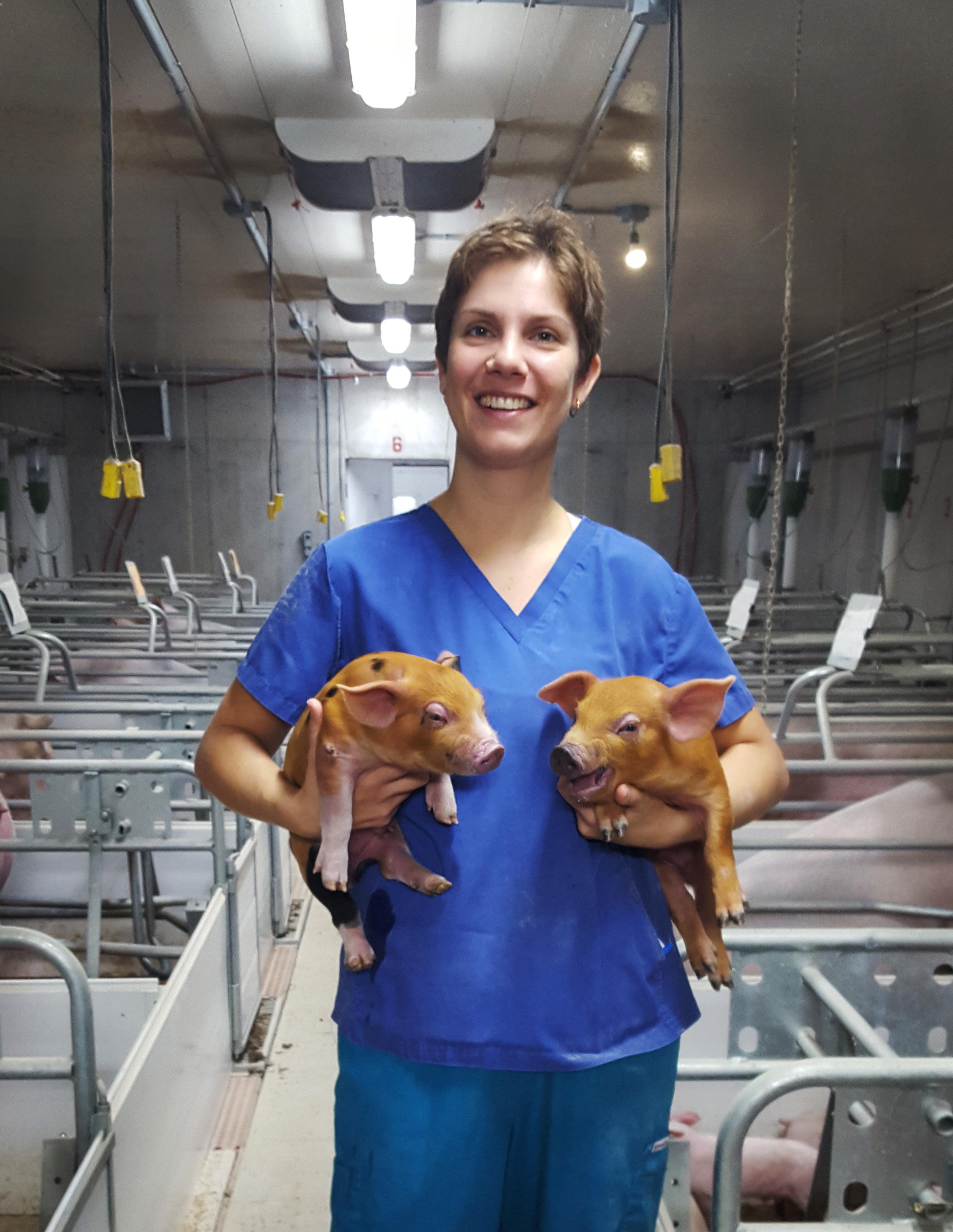
FREE | Winter 2018 PRODUCER
THIS ISSUE: Onboarding vs. Waterboarding - Making Onboarding Less of a Chore Women in Pork Production: Perspectives from Within the Industry Partnering with Topigs Norsvin at the Delta Canada Boar Research Center
MODERN
Sponsored By: IN
THE
A Note from the Editor,
The Modern Producer was developed to bring today's producer an inside look into emerging technologies and equipment in livestock housing. Our mission is to provide you with a multitude of resources with clear and honest insight from other producers, researchers, and experts in the industry.
In this issue, You will hear from a producer how she manages staffing and onboarding issues, including the use of TN visa employees and creative scheduling.
We will explain how to self-condition and develop your gilts and how a robust ESF system can actually eliminate extraneous pregnancy checks.
You will read the stories of several women in the pork industry and their perspectives on how the industry is changing.

We will showcase several of our recent projects and unveil exciting technology updates on handling sow feedback.
Plus we have an awesome recipe for Smoked Dr. Pepper Ribs that you won't want to miss, and more.
If you are interested in reading more articles like the ones you will find in this magazine, please visit info.newstandard-group.com/blog
- The New Standard Group
3 CONTENTS Managing Open Rates with Automatic Heat Detection and Central Separation Your Next Gilt Trainer Could Be Who You Least Expect Jamee Amundson Eggers On the Future of the Pork Industry Fun for the Kids: Coloring Page Onboarding vs. Waterboarding - Making Onboarding Less of a Chore Women in Pork Production: Perspectives from Within the Industry Partnering With Topigs Norsvin at the Delta Canada Boar Research Center The Secret to ESF Success: Gilt Self-Conditioning Converting a Stall Barn to a Group Sow Housing Barn at Pembina Colony New Perspective on Handling Sow Feedback Recipe: Smoked Dr. Pepper Ribs 4 6 9 10 16 22 24 28 32 35 26
Managing Open Rates with Automatic Heat Detection and Central Separation
This will probably seem like a no-brainer, but one of the biggest factors determining success on a hog farm is making sure the sows that are supposed to be pregnant are actually pregnant. In traditional gestation stalls, workers are tasked with performing ultrasounds on each bred sow, a job that can be dangerous and time consuming both for workers and pigs.
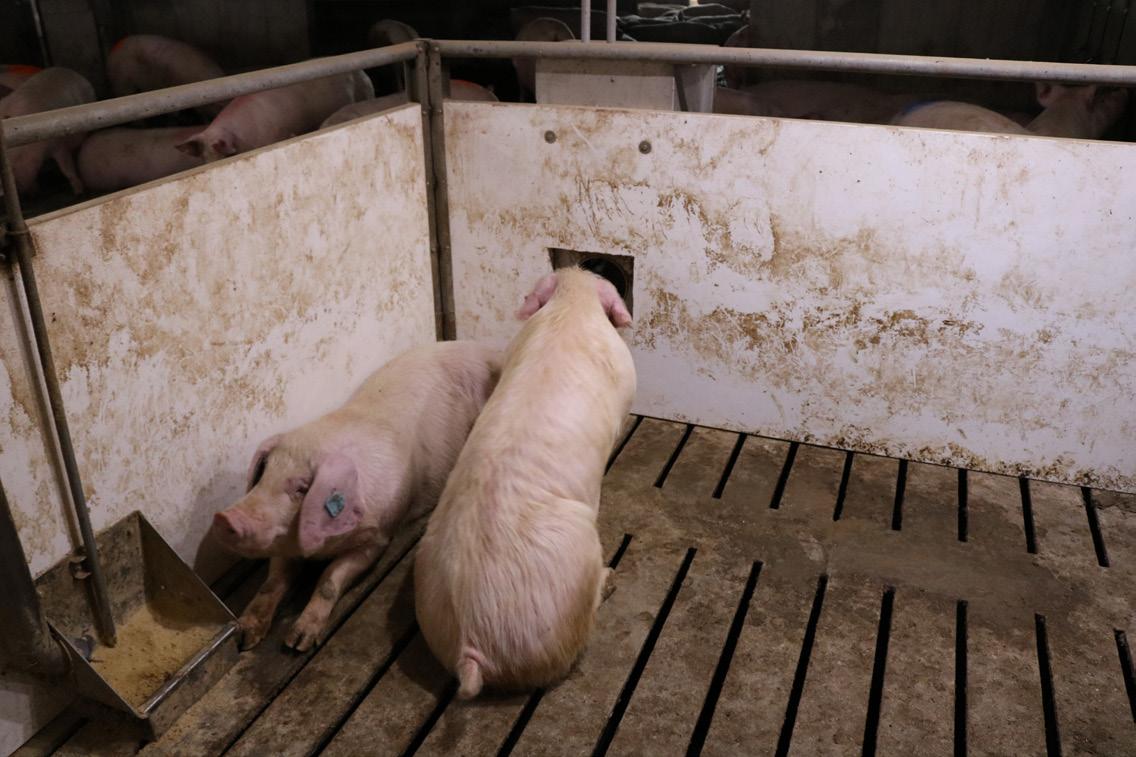

Even after switching to group housing, some farms still struggle to find a good system for identifying sows in heat. Watching for visual signs of estrus is a skill that takes time to develop and require close staff monitoring. Thankfully with New Standard and Nedap Livestock Management, the task of identifying and dealing with open sows gets a whole lot easier.
What is Automatic Heat Detection?
Heat detection is a popular add-on to the basic Nedap system, and one that we utilize in many of our barns. These designs include a fully-enclosed boar pen in a central location. This pen has a peep hole in the paneling at snoutheight that gives just the right amount of musk to attract excited, open sows.
To ensure all sows pass the pen several times throughout the day, the boar station is placed in a central location in the barn. The small opening guarantees snout-only access. Here is a photo from the boar’s perspective.
The automatic heat detection system is designed to track how frequently, and for how long, a sow visits the boar station. Sows who are frequent and prolonged visitors, based on the selected internal sensitivity settings, are logged in the system as in heat or suspected open, with more detailed reporting of her boar visits available on her individual sow record.
4
The heat detection system also offers the option to paint open sows for easy visual identification. With up to 99 percent accuracy in identifying open sows, the notifications come pouring in even before she shows other obvious signs of being in heat.

Identifying Open Sows

Farms approach the identifying of open sows in a few different ways. Some prefer the system mark open sows with paint and also automatically flag these sows for separation at the electronic feeders. Others choose to paint sows without automatically flagging them for separation, preferring to make judgments on a sow by sow basis. Still others choose to have the system flag sows for separation but not paint them.
The beauty of the electronic system is that all of these are valid options for producers. The system is truly customizable to the needs of individual farms, and even individual barns within those farms.
How Central Separation Works
For those using the Nedap Electronic Sow Feeding System, central separation is a built-in function of the forward exit design. As the sow enters the feeder it scans her ear tag, enabling the system to feed her the exact amount needed for her parity, gestational age, and body condition.
After she is done eating and drinking she forward exits into an exit alley and is identified again in the separation alley. At that time, the system will determine if it should mark her with a specific paint color and, if needed separate her into a holding pen. Throughout the day, most sows will simply pass through and return to the general laying area.
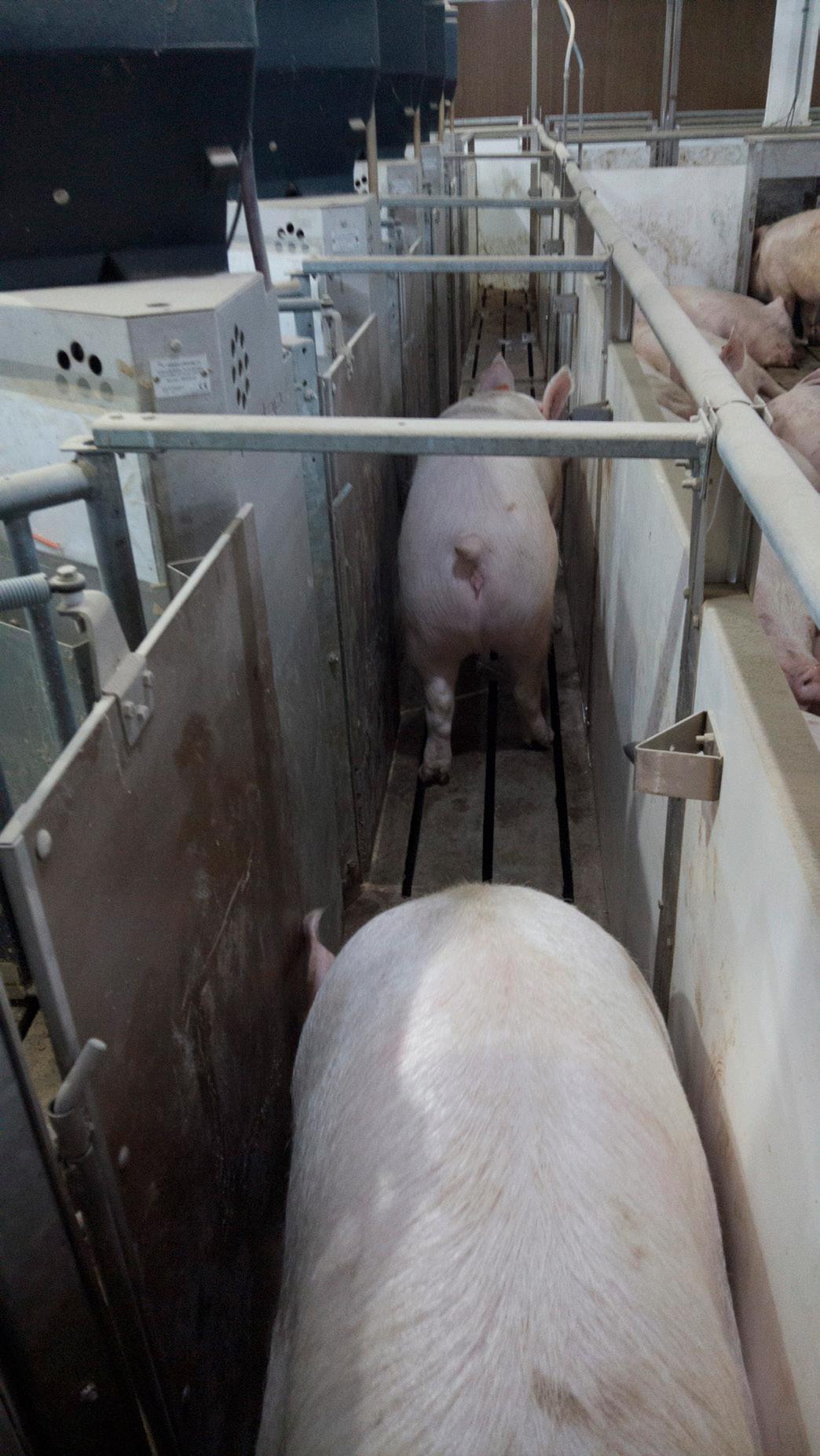
Custom Options
The beauty of an intelligent system is watching how individual barns can customize the software and hardware to help them accomplish their goals. In addition to heat detection, farms regularly use the central separation function to select low performers, sows in need of vaccines, sows ready to farrow, and even those with unique behavioral issues. Not only is this an easier approach for staff members, it is also a non-threatening way to manage your sows and make the most of a dynamic and powerful swine management system.
The heat detection system also offers the option to paint open sow for easy visual identification.
With up to 99 percent accuracy in identifying open sows the notifications come pouring in even before she shows other obvious signs of being in heat.
5
Jamee Amundson Eggers
“I
ignore welfare, or foreign animal disease preparedness and then get hit by that train coming down the track.”
Jamee
Amundson Eggers, Producer Education
Director at the Iowa Pork Producers Association is a powerhouse of knowledge and passion in the pork industry, though she came to it in a roundabout way. We sat down with Eggers to hear more about her background and her unique perspective on the future of the pork industry.
Eggers’ Background
Eggers attended Iowa State University and got her undergraduate degree in animal science. She then attended the University of Nebraska for a master’s of science in animal nutrition with a focus on ruminant nutrition.
Starting her career working for both the Nebraska and Colorado Departments of Agriculture in the state veterinarians’ offices, Eggers has diverse experience working with everything from sheep and goat health, poultry health, and bovine disease management programs to animal welfare and neglect within commercial pet animal licensing.
This animal welfare experience gave her a foot in the door to working at the National Pork Board where she focused on pork quality and transport quality assurance programs. She also worked on animal welfare auditing programs and tracking the results of a wide variety of research projects. In early 2018 Eggers transitioned to her current position with the Iowa Pork Producers Association, where she heads up a variety of committees on producer education, swine health, foreign animal disease preparedness, animal wellbeing, and research.
“I have my hands in several different projects everyday,” Eggers said, “It offers me a lot of variety and hands-on time with pork producers, researchers, and educators.”
Because of Eggers’ time at the National Pork Board and her current position at the Iowa Pork Producers Association, she offers a unique perspective on the position of group housing in the U.S. as well as her thoughts on the future of the pork industry.
The Future of the Industry
Eggers acknowledges that these are uncertain times for many producers. Current trade wars make it hard to know what changes could be coming down the pike. But despite economic uncertainty, Eggers warns that producers shouldn’t just sit back and wait to see what happens.
“The worst part of the uncertainty is the tendency for many of us to put other issues on the back burner,” Eggers said. “I don’t want us to ignore welfare or foreign animal disease preparedness and then get hit by that train coming down the track.”
Will There Ever Be a Group Housing Mandate in the U.S.?
Eggers is encouraged by the voluntary move many producers are making toward group sow housing, as research shows that when it is done well, it can be just as efficient or productive as other housing systems.
“I think it has been exciting to see the shift in attitudes, to see how producers are starting to embrace new
6
don’t want us to
technologies or different production systems like group housing,” Eggers said.
“The New Standard panel discussion at World Pork Expo this year was a great example of producers who have converted to group housing, are embracing new and different production methods, and striving to balance welfare and production challenges the best they can every day,” said Eggers, “It was great to see their willingness to peer share with no competitive stance, no holding their cards to their chest. Everyone was viewing it as continuous improvement and that was neat to watch.”
While Eggers believes that public pressure may push some producers toward group sow housing in the future, she hesitates to conclude that the U.S. will move toward a full-on federal mandate for the practice like Canada.
“Due to the strong value on personal freedom in the U.S., I don’t see a mandate happening,” Eggers said.
Along with the shift to more group housing, Eggers noted other exciting changes in the swine industry. Advancements in technologies like electronic sow feeders, more robust data management tools, new handling equipment, and movement toward fully filtered buildings are just a few examples of swine producers striving for continuous improvement using technology and innovation.
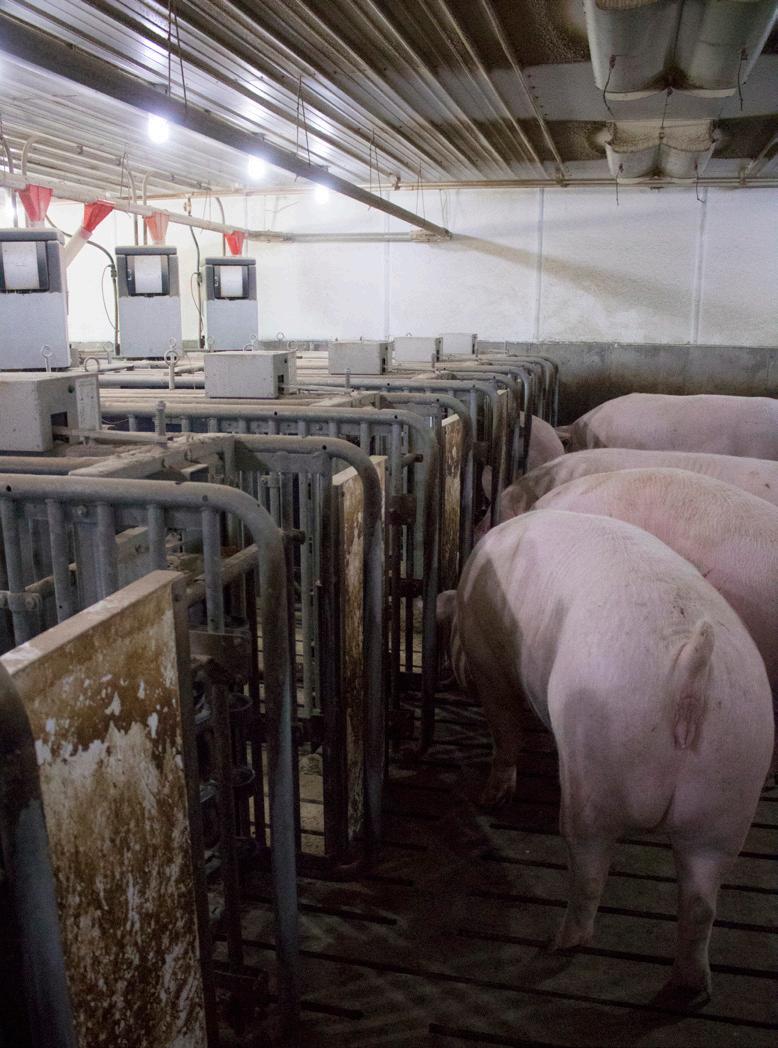
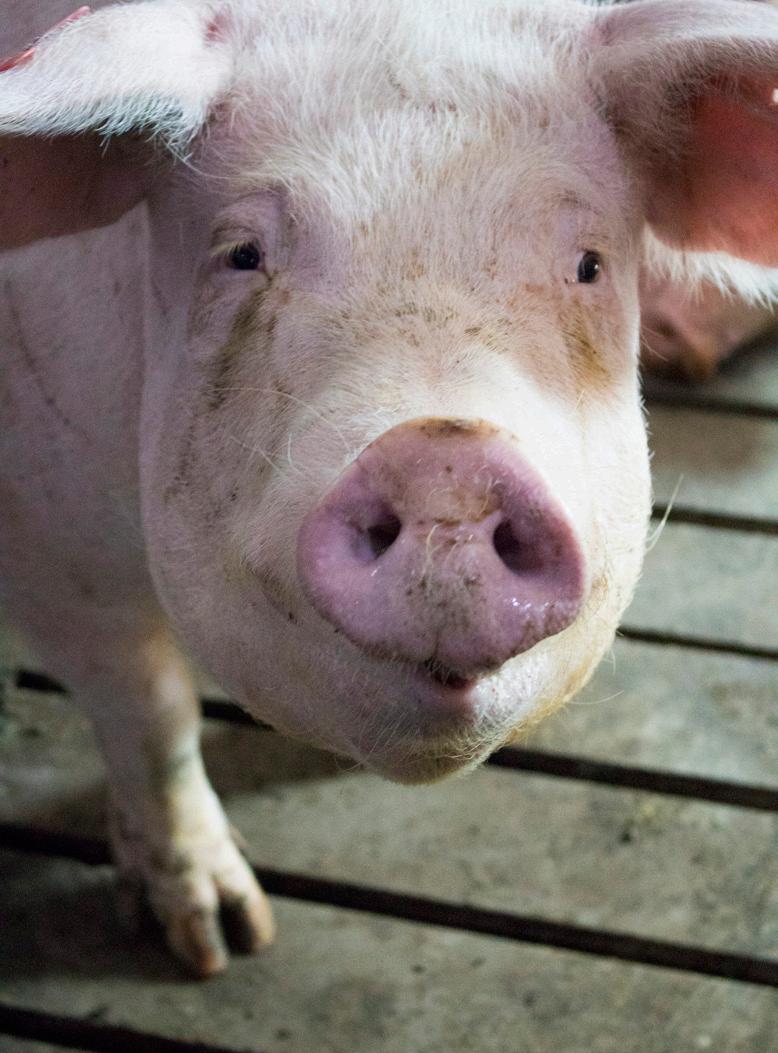
Innovation is Everywhere in
the Swine Industry
Eggers explained that one of her most dynamic projects is working with a research committee through the Iowa Pork Producers Association to fund scientific research at Iowa State University.

“The research committee has supported a lot of outstanding and important research throughout the years. While the research priorities rising to the top may change each year, their commitment to supporting researchers, developing human capital and driving innovation is relentless,” Eggers said.
“The more I meet with producers and talk about their farms, the more I realize pig farmers are an innovative and creative bunch.”
Some of the projects funded by the committee and overseen by Eggers include manure management with cover crops and their effect on water quality, developing new animal handling tools for non-ambulatory animals, exploring creative ways to decrease odor from swine facilities, disease elimination in production, and pork quality.
“Most recently it was exciting to see the committee stretch themselves and fund some really innovative projects like
7
using camera and animation technology to teach computers to identify sick pigs as well as a project looking at caretaker attitudes and euthanasia training,” said Eggers.
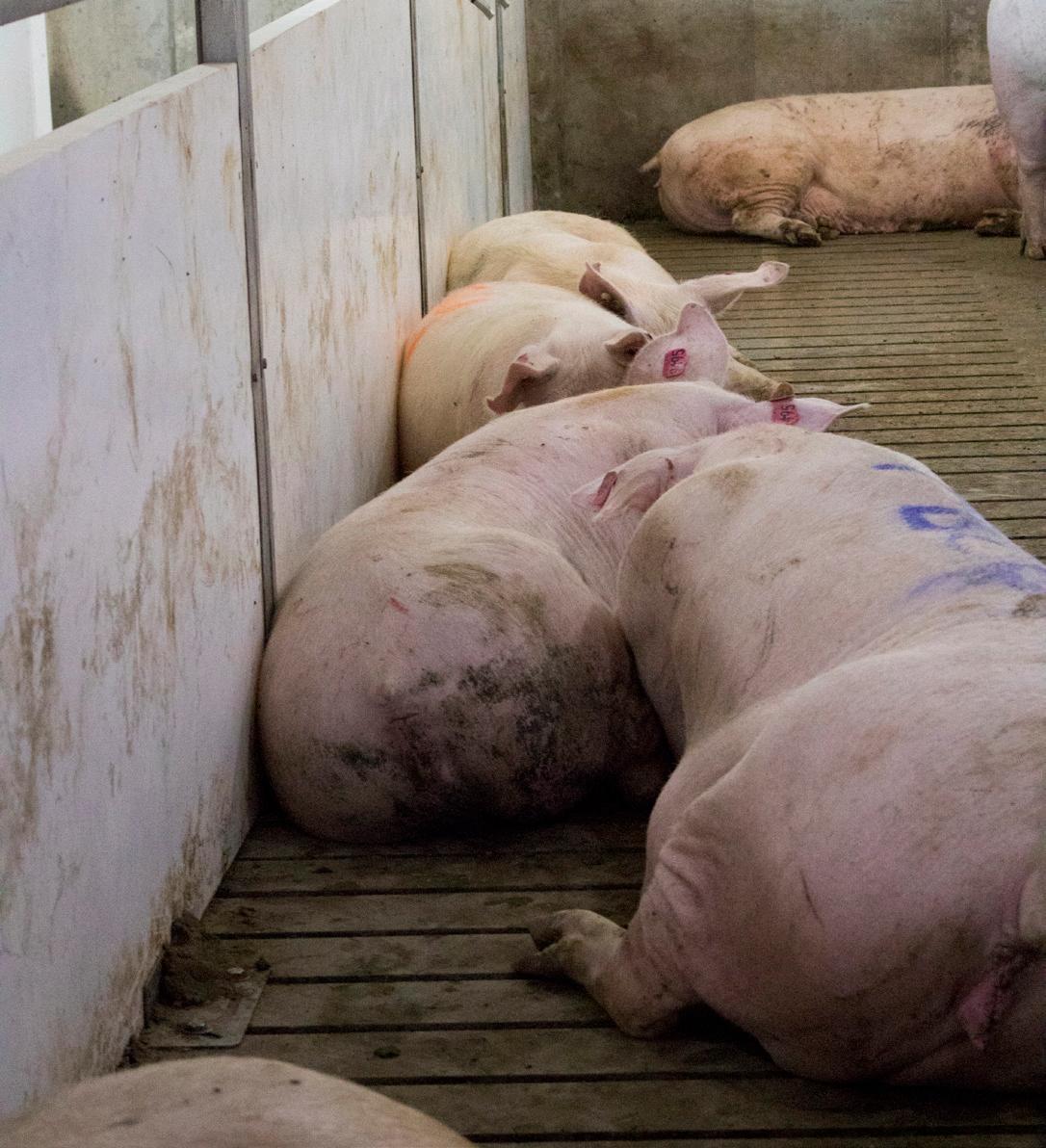
The other place Eggers sees technological innovation in the swine industry is the explosion of agriculture technology accelerators or startup groups. Iowa is home to the Iowa AgriTech Accelerator where the two cohorts of startup companies have included a swine production product. Eggers has served as a mentor for the Accelerator both years and really enjoyed the experience.
“Mentoring sounds so formal and fancy. In reality, the founders of these two startups have probably taught me more than I have taught them. I am in awe of their entrepreneurial spirit and skills.”
As a mentor, Eggers helps the startups develop swine industry contacts, connects them to researchers and research funding opportunities, and gives feedback on their practice pitch presentations. Eggers notes this is just a small example of the innovation present in the swine industry.
“The more I meet with producers and talk about their farms, the more I realize pig farmers are an innovative
and creative bunch,” Eggers said. “They are consistently solving their problems in a creative way that works for them. I think we could have an entire Accelerator full of only swine products,” Eggers adds.

Hope for the Future
Despite the current mood of uncertainty, Eggers believes we have reason to celebrate victories in the present and hope for better days in the future.
She has seen what she describes as a huge shift in opening farms to the public eye.
“We are doing a fantastic job of embracing the idea of sharing our story,” Eggers said. “We have made great strides to show how we are supporting the We Care ethical principles of the industry,”
From a renewed focus on animal welfare to more transparency and research on air and water quality, producers are doing their best to promote excellence. “It is a challenging time. Change has never come this fast before,” Eggers said. “I feel the concern, but I am also encouraged by the willingness to look forward and adapt to change. Seeing the innovation, resiliency, and creativity in pig farmers gives me great hope for our industry.”
8
“It is a challenging time. Change has never come this fast before, I feel the concern, but I am also encouraged by the willingness to look forward and adapt to change. Seeing the innovation, resiliency, and creativity in pig farmers gives me great hope for our industry.”
Jamie Amundson Eggers
Grab some markers and Color the pig and his home
FortheKids
9
Onboarding vs. Waterboarding: How Janae Metzger Makes Staff Onboarding Less of a Chore
When you meet Janae Metzger, the first thing you will notice is that she is an intelligent, friendly, and enthusiastic individual. And it is these very traits that have made her so successful in hiring and onboarding new barn employees. Metzger is the Assistant Manager and Employee Developer at Pig Hill in Alvord, Iowa. Her successes in the area of human relations and training has caught the attention of much bigger operations, with several farms hoping to learn her ways and duplicate her success.
About Pig Hill
Pig Hill is a part of Mogler Family Farms, a diverse multi-generational operation in extreme Northwest Iowa. Janae is a Mogler by birth, and while she was excited when her family elected to expand their swine operations, she admits that the opening of Pig Hill’s sow barn wasn’t always easy. Both she and her cousin Chet, the manager of Pig Hill, were key in the first stage of hiring and training.
“When I was hired onto my family business in 2015, I was one of 20 new hires; and it was my task to hire and train the other 19,” said Metzger. “Not only was I hired on to be the assistant manager, but to figure out how to employ people as well. It was definitely an overwhelming task starting this barn. Rather than onboarding we were pretty much waterboarded ourselves and waterboarding our new employees!”
But despite the early challenges it quickly became apparent that Metzger had a special talent for working with people, finding good employees, and training them for success.
Pig Hill
’s “
Secret Sauce”
The reality of the pork industry is that workers tend to come and go. Barn work can be physically demanding with an unforgiving schedule. Unfortunately, the public’s perception of “stinky hogs” doesn’t help with recruiting either. While Metzger still struggles to find high quality candidates from time to time, Pig Hill’s streamlined screening process, focused onboarding, creative scheduling, and continued workforce development has allowed her to retain employees longer and develop a thriving barn culture.
Who to Hire
Metzger’s hiring pool is both local and international, through the TN Visa program. When she has staff openings, her first step is to take out local ads and conduct face to face interviews; but she also makes a quick phone call to Tobin, her U.S. contact who works with a TN Visa recruiter in Mexico to help fill additional positions.
TN visa workers must have four to six years of college education in animal sciences, and their application to come to the US to work is for a temporary visa; most often for one to three years.

10
TN visa employees are able to perform skilled labor—tasks that match their education and areas of expertise. Metzger believes it has been an asset to their operation.
“Where the TN visa workers bring me the most value is in their technical training with animals and their understanding of the science and physiology behind what we do; they understand medications and vaccines,” Metzger said. “While most of them have never done commercial work in a barn, they have the knowledge and the desire to learn more and they have been dedicated workers who are thankful for the opportunity to grow their skills.”
The recruitment process for TN visa workers is rigorous and involves multiple interviews with the consulate and extensive background checks; and that is all before they even arrive on the farm. But, Metzger notes, they have proved to be very reliable employees.
The Interview Process
When Metzger interviews domestic candidates she focuses less on tasks and knowledge of hogs and more on their values. She has found that you can teach people the various skills involved in caring for animals, but it is much more difficult to teach character.
After the interview process, Metzger consults with the other barn managers to get their opinion on the candidates and then they make their final selections and present them with job offers.
“Who we are going to hire always comes first,” Metzger said. “But the very next decision I have to make is how I can equip them for success from day one.”
Onboarding
Day One
On their first day, Metzger takes workers through the traditional formalities. They enroll in payroll, get their PQA certification, go over the employee handbook, and learn technical information about biosecurity and other farm basics.
One of the unique tasks that Metzger implements that first day relates to relationship building. She has a questionnaire that she gives everyone on their first day. They answer a variety of questions about who they are, what they like, and about their family. Then she posts their responses on the wall of the breakroom where everyone can see it.
“I find that it really helps people get to know each other more than the basics of who you are where you live,” Metzger said. “I also send this information out to the rest of the staff who don’t work in the sow barn so they know more about our staff.”
The First Week
In the first week, Metzger works one-on-one with her new employees. Because of her diverse experiences in the barn, she is able to train employees in the tasks required for any barn position. She finds that working alongside them gives them a sense of continuity and puts less pressure on other employees to train new recruits, which makes everyone happier.
During that first week Metzger only introduces one new skill a day. By the end of the week her new employees have seven full days of one-onone training and they understand seven skills in the barn. She uses the end of the week as a time to check in with employees and see what they feel needs work and what skills they are uncomfortable performing. This gives her a clear plan for what to focus on in week two.
The Second Week
In the second week, new employees complete video trainings from Pork Avenue, a pay-per-employee training subscription service with videos on virtually every process that takes place in the barn. Because Pork Avenue is a bilingual system, it helps to bridge the language barrier. Metzger specifically chose to implement the video training during the second week because she wants them to have an understanding of the big picture of the farm before they learn more detailed skills from the software.
The Pork Avenue system is so complete that it even includes trainings on Nedap and the Velos software. Employees aren’t expected to watch every training, rather she breaks it into sections for them. If they are in breeding they focus on those videos.Each training module also has a companion training sheet that employees can print for review, as well as a quiz that follows. This check and balance system allows Metzger to see if there are important concepts they are misunderstanding.
“At the end of the second week I know they’ve seen it in the barn and in the video,” she said. “And now we can go back into the barn.”
11
Continued Training
For the rest of their training, Metzger continues to build their skills in the barn, but gives employees a bit more autonomy.
“I’m still there to step in if they need help or continued training and development,” Metzger said. “We never arrive. We are all always learning.”
“I’m always reviewing. I always know where they are at,” she said. “When it is an open door conversation it isn’t as intimidating.”
Scheduling
Another important factor in Pig Hill’s onboarding process is a thorough explanation of their scheduling system. Through a process of trial and error, Pig Hill has discovered a schedule that works well and keeps their employees happy. The barn operates on a staggered, rolling schedule of eight days on, two days off so that within each department no two people are off at the same time.
The Monday through Friday barn schedule is 6:00 A.M. to 3:30 or 4:00 P.M., except for the farrowing unit which operates 24 hours a day with two workers alternating four nights one week and three nights the next.

The weekend schedule is more flexible with a standard Saturday shift from 6:00 A.M. to noon (employees also volunteer to cover farrowing from noon to 4:00 P.M. as needed). Sunday shifts are flexible to allow for church attendance if desired.
On Sundays we have a flexible start at 5:30 or 6:00 A.M. All of our employees are free to leave for church if they want, we just ask that those employees come back in the afternoon to finish up their hours and perform a few chores or a basic barn check. Those who choose not to go to church can end their shift at 10:30 A.M.
Rather than having employees dread the weekends, she finds that they enjoy the more relaxed shifts.
“At the sow farm I worked on after college we worked late in the day every weekend,” Metzger said. “That was a much harder schedule to keep.”
Formal Reviews
As the weeks progress, Metzger checks in with her new employees quite regularly to spot potential issues on the front end. While all new Pig Hill employees receive a formal 90 day review, Metzger was quick to note that this review shouldn’t contain any surprises. She subscribes to the idea of continual feedback, allowing employees to feel confident in their standing in the barn at all times, not just after a review.
While the schedule wasn’t a universal hit at first, employees have come to love the flexibility it offers to attend daytime appointments and even save on daycare costs.
Pig Hill also gives their employees freedom to trade shifts with themselves if needed, as long as their departments are adequately covered on their days off. “If you have two days off earlier in the week and you want to trade days with yourself to go somewhere on that upcoming weekend, you
12
before Metzger discovered the secret to frustration-free onboarding. However, the time she has spent developing her staff and listening to them has paid for itself in lower turnover and happier employees.
can do that,” she said.
Developing a Healthy Employee Culture
When Metzger took the reins of employee development at Pig Hill she knew she wanted to implement some form of leadership training for all levels of staff.
“One thing I saw working on other farms was the quarterly, or biannual, manager training. Managers or leaders would go to an event, get excited and go back to the barn. There was no follow up, no continual trainings, and no employee-level training,” explained Metzger. “I got frustrated as an employee because I wanted that. I wanted trainings to be a regular part of our schedule. I knew that someday if I was able to do barn management I wanted to be different and create a unique culture.”
Pig Hill’s monthly development meetings take place on days that most staff can be present, and when production isn’t overly intense. Metzger caters a lunch for her staff and takes an hour to focus on building a healthy work culture through community and education.
The meetings change from month to month, but generally focus on either developing the team or developing the self. Metzger uses resources such as the DISC personality assessment, Pat Lencioni’s Five Dysfunctions of a Team, Simon Sinke’s research on motivation, or in-depth reviews of Pig Hill’s performance statistics based off the concept of the Four Disciplines of Execution.
If that sounds like a lot of information, it is. Metzger is wellread and loves listening to business podcasts and watching TED Talks—all with the goal of bettering her team.
But she is also quick to credit others for their role in shaping the trainings, “My uncle Kent comes from the manufacturing and financial world and he has given great input on ways we can develop our staff.”
The DISC Assessment

When pressed to pick just one practice that she believes has the ability to impact company culture the most, Metzger chose the DISC assessment, a personality assessment often used in corporate settings, but rarely with barn staff.
“My family has worked with an HR advisor for many years and he did DISC assessments on our family and past employees,” said Metzger. “That self-knowledge and knowledge of others has been so impactful for me and I wanted to share that with our staff, so he has been coaching me on using it with them. I think that when you have a deeper understanding of yourself and those you work with, it is much easier to get along.”
When new employees come on board, Metzger has them take the DISC assessment right away. It helps her understand them, how they relate to others, and even which areas of the barn they will find most appealing. The DISC
assessment is available in both English and Spanish, making it the perfect tool for her diverse staff. Once employees take the DISC, Metzger prints out their results and sits down with them individually.
“During our one-on-one I explain more information about each of the types and what that might mean for them in working with others,” said Metzger. “The DISC assessment places you at a certain spot on a quadrant or wheel; so I also show them the spot in our breakroom where we have the DISC wheel with each of our pictures placed where we fall.
For Metzger this wheel is the backbone to most things in their company culture. If there is an issue with employees, she can almost always help them through the conflict by
13
There was plenty of trial and error
turning to the DISC wheel poster.
“We look at where they are at on the wheel and where their coworker is. I will often use myself as an example. I make fun of myself and show them how the pitfalls of our personality can also turn into our strengths,” Metzger said.
Looking Forward
The change at Pig Hill didn’t happen overnight. There was plenty of trial and error before Metzger discovered the secret to frustration-free onboarding. However, the time she has spent developing her staff and listening to them has paid for itself in lower turnover and happier employees.
“Before I did what I’m doing, we had no system.” Metzger said. “We had high turnover and people were frustrated. All because I didn’t hire the right people from the beginning and didn’t work on the culture.”
With a better interviewing process, hiring, onboarding, and a greater focus on company culture, Metzger is developing a barn staff that makes her proud. “Where we are at today so much better,” she said. “Invest in people. It makes all the difference.”
“It is honestly humbling to think that other companies want to embrace what we’ve created,” Metzger said. “We aren’t perfect, but I think we’ve found a system that does really work for this industry.”
UsinG the TN Visa to Staff Your Barn
What is a TN Visa?
The TN visa allows North American international workers (Canadian and Mexican) with four to six years of college education in animal sciences to apply to work for one to three years in the United States. Canada has a similar program, referred to as the NAFTA work permit because it’s part of the North American Free Trade Agreement.
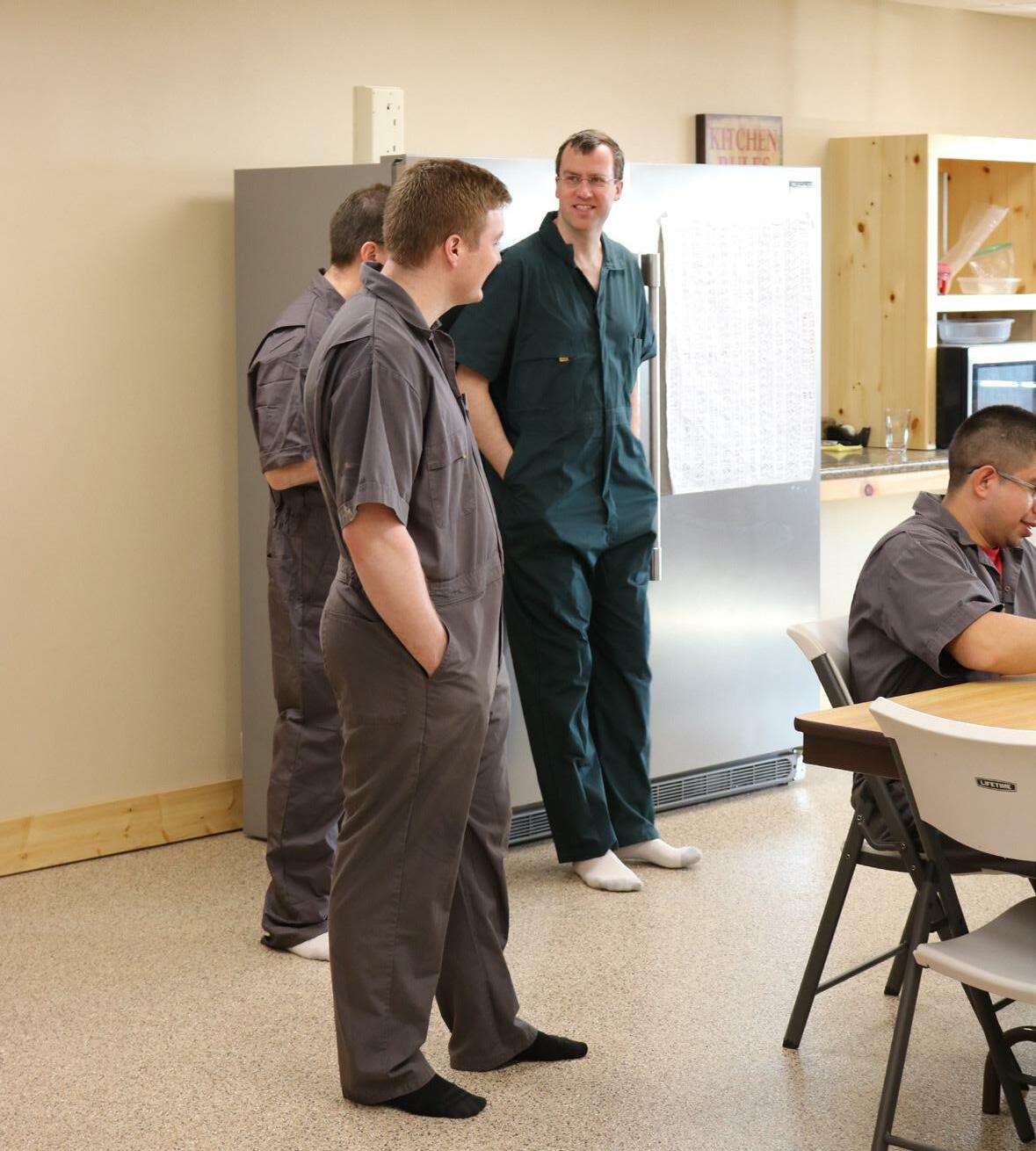
The TN visa application process is rigorous and involves multiple interviews with the consulate, as well as an extensive background check. However, a number of recruiting firms are beginning to specialize in this type of worker for hog farms, so even though the process might sound daunting, it can be quite efficient.
How Does the Hiring Process Work?
It certainly isn’t a traditional hiring experience, but that’s part of why it works for some producers.
“We’ve had a great experience using the TN visa program,” Metzger said. “The team members that we have had are doing an excellent job”

While Metzger’s experience has been incredibly positive, she has had to make accommodations to work with the program and help her new employees adjust to life in America.
Providing Housing and Support
“We are required to provide them with housing and furniture as well as transportation to and from work,” Metzger said. Pig Hill owns a house and rents an apartment that they use for their TN visa employees.
“We have to help them with some basic things like finding a doctor and learning how to navigate the healthcare system in America,” Metzger said. New employees come to Pig Hill with little beyond the clothes on their back. It’s up to Metzger to help them study for the driving exam, get access to groceries, and even find a vehicle.
Is it Worth It?
The program isn’t cheap to run due to the extra expenses and labor involved, but for Metzger it has solved a huge hiring need and is absolutely worth it.
14
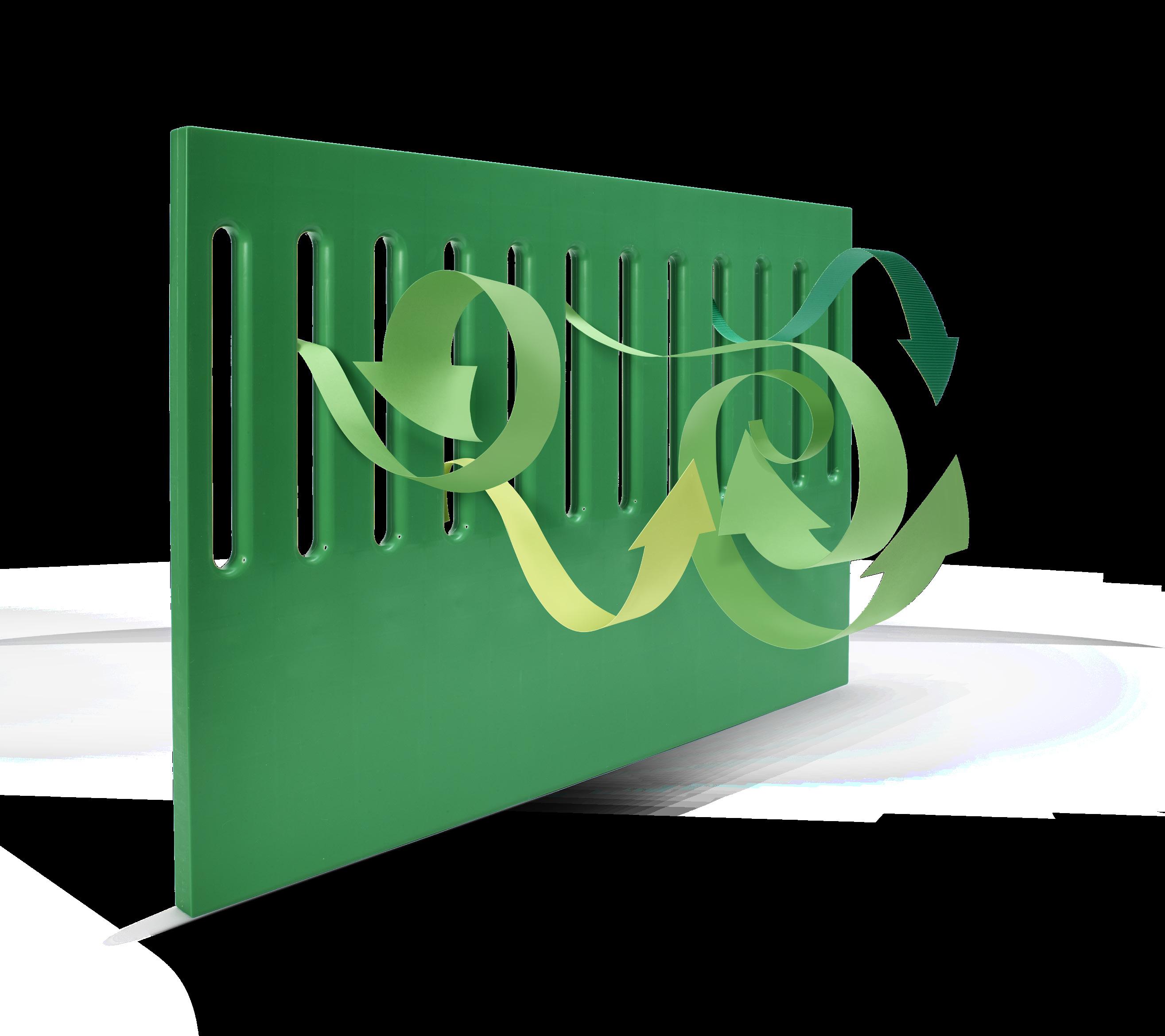

Distributed in North America by: GROUP WWW.PANELTIM.COM Paneltim® Venti® optimizes the airflow in your barn now also available in 13/8” - ideal for housing piglets NEW
Womenhave always had a place in the pork industry.
And although they haven’t always received the credit they deserve, women have been performing important tasks on farms for as long as farms have been in existence.
Throughout her time in the industry, National Pork Board Vice President Jan Archer has watched women’s roles on the farm evolve.
“From my observations, women historically became pig farmers because they married one,” Archer said in an interview with Pork Cares. “However, in today’s environment, more and more women are becoming the voice of agriculture and the voice of their farms.”
Women in Pork Production: Perspectives from Within the Industry
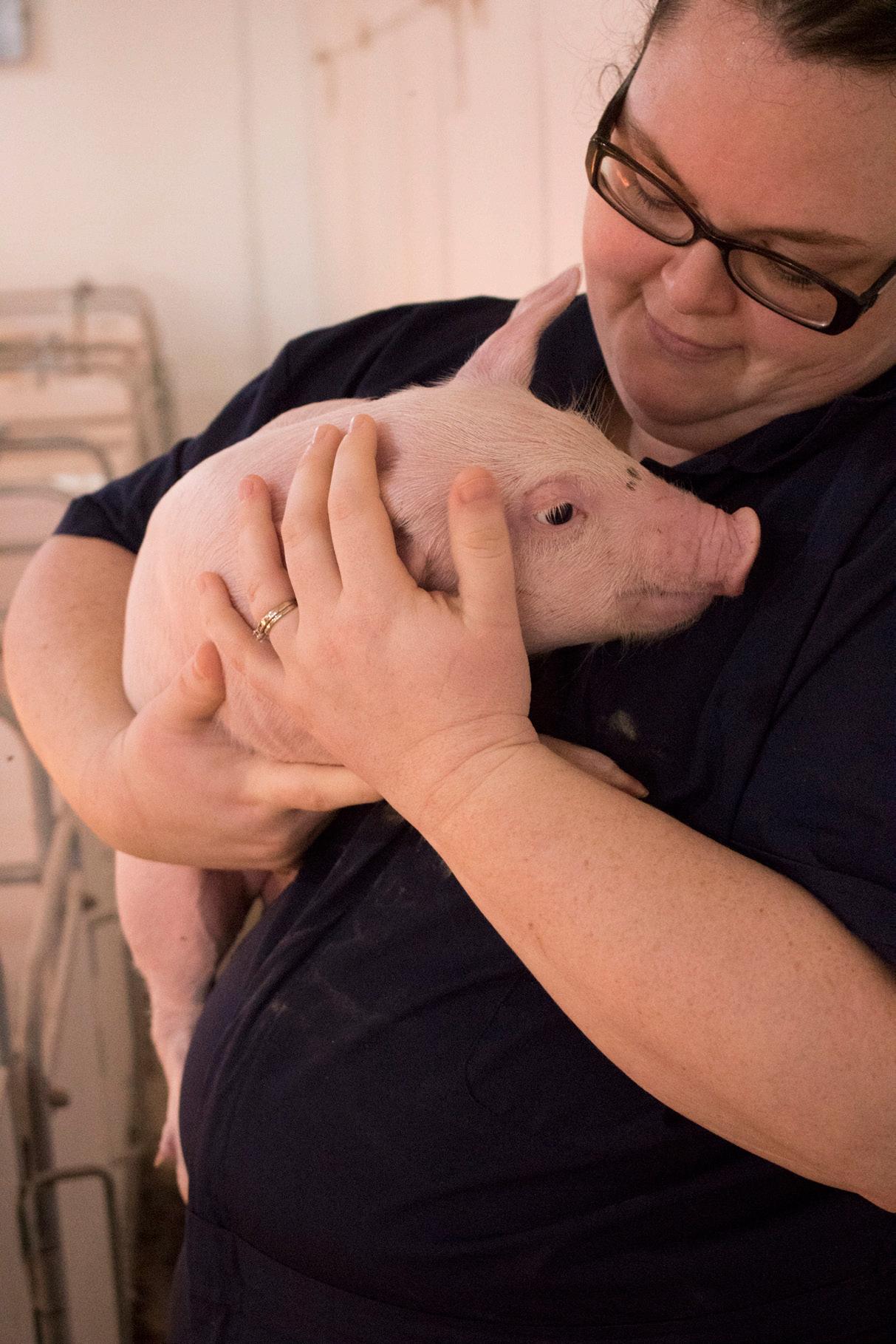
The Evolving Role of Women
Those who have been in the industry for awhile note that while women have always been important to the industry, in the past five to ten years women have been moving more and more into positions of leadership and management. Women aren’t just bystanders, they are stakeholders and equal partners alongside their male counterparts; many are also leading the way in research, teaching, and veterinary care.
Yet despite this, according to the census of agriculture performed by the National Agricultural Statistics Service (NASS) branch of the USDA, there was only a one percent increase in the number of female hog and pig producers in the US from 2007 to 2012. NASS’s census, which is performed every five years, reported that in 2007 just nine percent of the industry was female and in 2012 ten percent were.
While the 2017 data isn’t available until February 2019, it is crucial that no matter what the results, we find ways to make women feel empowered to pursue a successful career in the pork industry. One way we can do that is by
16
supporting women who are already making their mark on the industry, telling their stories and encouraging young women to join their successes.
Getting The National Spotlight
In 2017, a woman earned the title of America’s Pig Farmer of the Year for the first time. The fact that she was a woman never stopped Leslie McCuiston from pursuing a career as a pig producer.

“In my experience, the pork industry has been very accepting and welcoming of women, who are a natural fit in livestock production,” she said.
Raised on a cattle farm in Oklahoma, McCuiston worked her way up to senior production manager with The Maschhoffs where she manages ten breed-to-wean farms throughout South Dakota and Nebraska. Far surpassing the national average, over 50 percent of the leadership roles on McCuiston’s farms are held by women. She believes that a woman’s innate ability to be empathetic, caring, and inspiring, make each member of her team—and women throughout the entire pork industry— strong leaders.
“I think at our hearts, women are caretakers and nurturers, not only of the pigs but the people we work with as well,” she said in an interview with National Hog Farmer. “Both of those pieces are very important. So, we set high priorities on taking on both those within our farms every day.”
McCuiston isn’t the only woman getting recognition on a national scale. The National Pork Board named Emma Lasco and Christine Snowden as two of three 2018 Pig Farmers of Tomorrow, an award that recognizes young farm leaders who intend to make pig farming their life’s work and are committed to raising pigs with ethical principles.
Could Women Lessen Our Employment Crisis?
In a time when production facilities, and really all industries, are struggling to find and keep employees, it is important to diversify our hiring pool and begin attracting workers from outside the traditional hiring pools. If we continue to focus on telling the stories of women in the industry, we can continue to shift industry norms and encourage young women to consider a career in pigs.
Swine Centre
It
17
have been working in the pork industry for about 15 years conducting research on-farm and in packing plants and working with pork producers to implement those research findings—including, but not limited to: processing piglets, sow
ment and handling of finisher pigs on-farm,
me!
Jennifer Brown Research Scientist, Ethology / Prairie
I
manage-
and during transport. It’s been such a great experience for
has
been fascinating to see the gradual change over the years in the amount of women in the industry. Although pork has been previously dominated by men, women are increasingly taking a greater role from all sides; I’ve seen more women in professional and barn staffs, more women professors in animal science and veterinary medicine, and more women studying agriculture. Women really are taking over!
With that, I think there will be more auto-
“In my experience, the pork industry has been very accepting and welcoming of women, who are a natural fit in livestock production”
Leslie McCuiston
“
The swine industry is filled with some truly amazing and compassionate individuals. It really feels like a family.”
Marsha Chambers, South West Ontario Veterinary Services, Production Manager
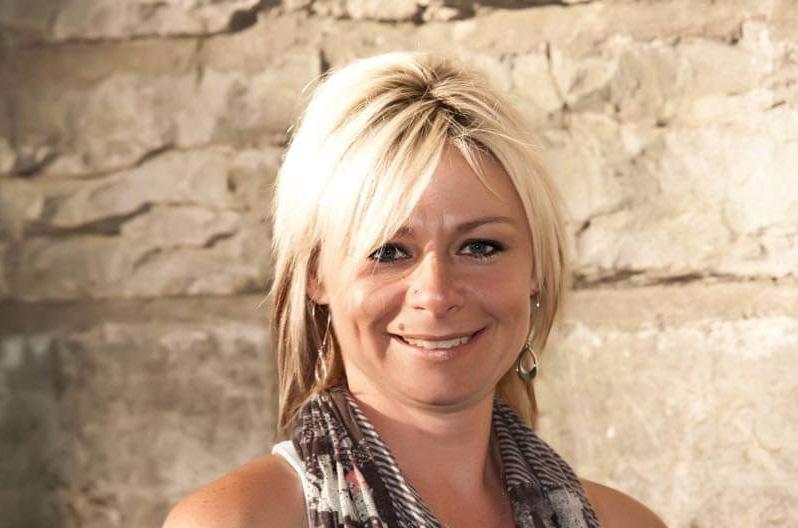
Coming from a farming background, both of my parents made decisions and worked equally hard on the farm, so being a woman in the pork industry came naturally to me. And while today there isn’t anyone that questions my knowledge or abilities in the industry, when I started 20 years ago I had to work extra hard to prove myself as a manager—especially with some of my farms being as big as 3,000 sows. As more women have entered the industry, I think women leaders have become more widely accepted, which helps women earn more respect from their coworkers and creates new barn roles that value their different perspectives.
I have been blessed with being able to work with clients to staff and troubleshoot their barns, as well as starting up new sow barns and training on the farms. From managing staff to becoming an engineer, from working with pharmaceutical companies to being a caretaker in a barn, I believe that women can hold many important roles in the pork industry despite challenges they might face. The sky really is the limit!
Lori Thomas, K State University PhD candidate & researcher at Thomas Livestock

When I first started my graduate program, I was one of two women. Now (Four years later), we are split about 50:50. The dynamics have really changed. Looking back at my production experiences (then and now) I have definitely been one of only a few women in the barn. But I always knew that this is what I wanted to do and didn’t let this stop me. When things got difficult, I just kept doing what I loved and it got me to where I am at now so I wouldn’t change a thing!
Someone once told me that women have to work ten times harder to prove ourselves. I disagree. Maybe it is my personality but I refuse to let my voice not be heard. I believe that women have this innate sense that allows us to care for animals differently and bring a different presence to the industry and it is powerful. To me, all that matters is that you want to be here. You want to make a difference in the swine industry. Man, woman, black, white, purple or yellow – that is all irrelevant to me.
I’m glad I was able to push through when times got tough, because having the opportunity to be a part of such an incredible industry is empowering and very humbling. The swine industry is filled with some truly amazing and compassionate individuals. It really feels like a family. But like family (or at least mine), they will push you to be your best. I am constantly being challenged in new ways and pushed to new limits. I always say stay the course and it hasn’t let me down yet.
My biggest piece of advice is to follow your dream and do what makes you happy. Don’t be afraid to ask questions or talk to someone you don’t know. Don’t be afraid to make mistakes. That’s life. There are so many opportunities out there, so stand your ground, do what you love, and the rest will fall into place.
18
“
I believe that women can hold many important roles in the pork industry despite challenges they might face.”
“There are many opportunities within the pork world, any young individual who is willing to learn, listen and ask questions —man or woman, will not have a problem finding a career in this industry.”
Maaike Campbell, Owner Birnam Pork
My first experience with hogs was during a summer job in a sow unit. It was the worst summer job I ever had due to bad management. I even told my parents that I would never go back to working in barns. Over time my parents became the owners of a sow unit but had zero experience in operating one. My promise to help out for a couple of weeks turned into a couple months, and eventually I ended up as manager before buying my parents out to become an owner.

In addition to my many roles on the farm, including being wife and mother, I sit on our local pork producers board, several provincial committees, and run the local ag in the classroom program for swine. In all of these positions I am surrounded by great people that don’t treat me any differently because I am a woman. In fact, if anything I find I get more respect because I bring a different opinion or view to the table.
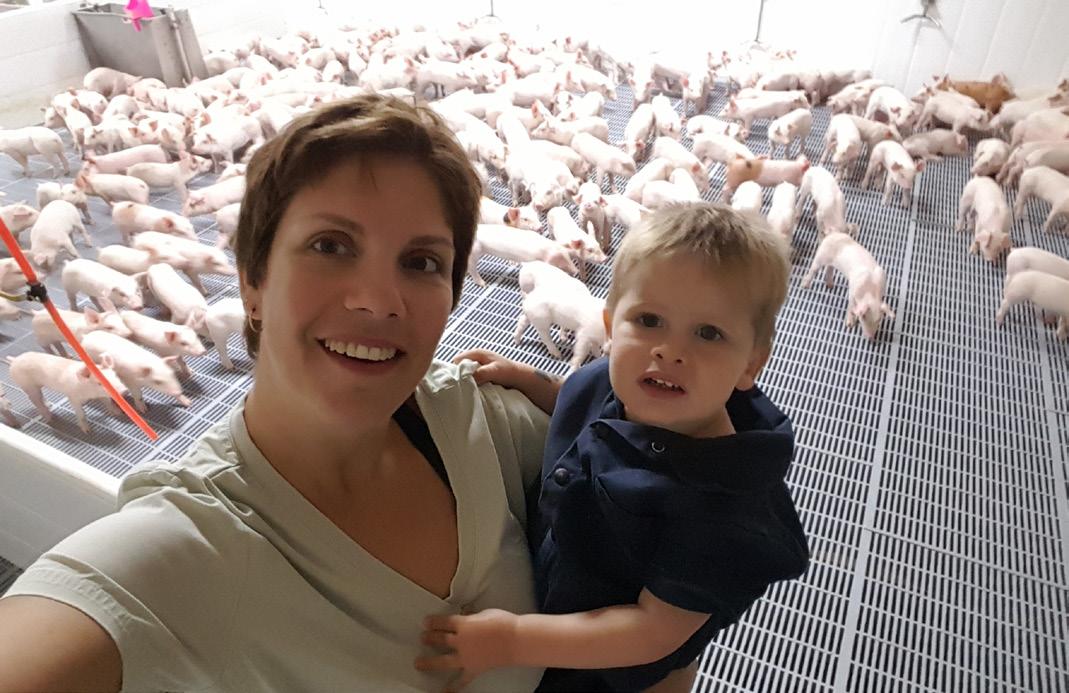
There are many opportunities within the pork world, any young individual who is willing to learn, listen and ask questions—man or woman, will not have a problem finding a career in this industry. Yes, I may struggle to find appropriate fitting clothing or do something in the barn that requires extreme physical strength, whereas my husband might be less inclined to nurture young animals, but each person brings a specific skill set that benefits the barn. It all comes back to the saying “there is no “I” in team;” if we all emphasize our own personal strengths, which have very little to do with gender, the barn and industry is boundaryless.
“ It takes a large amount of personal awareness to be a well respected woman in the pork industry, but the rewards are so worth it”
Janae
Metzgar, Assistant Manager
and Employee Developer at Pig Hill

It takes a large amount of personal awareness to be a well respected woman in the pork industry, but the rewards are so worth it! I personally am very aware of things like my approach, tone, and body gestures. Often times, women get labeled negatively when we are not aware of those things in a male-dominated industry. I am also okay hanging out in the background when necessary. For the most part, I don’t feel discriminated against. I do think, however, we should be willing to challenge the negative stereotypes about women while celebrating the things that make us who we are.
When it comes to barn work, it can sometimes be difficult to find females who embrace what is required from a physical and time commitment standpoint when working in this environment. We work interesting hours and we have to be available to the animals. While I don’t have children, I often think about the necessity of being able to be flexible for my family if that were to happen down the road. When you’re working in a barn other things in your life sometimes have to take the backseat or you need to have a backup plan five deep for the personal side of life so you can focus and be present while at the farm.
19
Can your system save you feed?
You work hard to get the best return on your feed investment. You hire experts to formulate sow diets, and you choose the highest quality feed. Do your management practices also support good return on your feed investment?
Here are three questions to ask to ensure your feeding system is supporting your bottom line.
Can you adjust rations based on need? Not all sows have the same nutritional requirements. The ability to feed different diets during gestation is advantageous because you can avoid wasting unnecessary feed.

Is your feeding system designed for the way sows eat? Get down to slat level and ask yourself these questions.
- Can your sows drop feed through the floor slats?
- Are your sows relaxed?
- If you’re feeding sows in groups, does your system have forward exits to minimize contact between fed and unfed sows?
If you answered, “no” to these questions, consider upgrading to a system that allows you to feed sows individually and promotes stress-free feeding. Nedap Electronic Sow Feeding is designed with the sow in mind and answers “yes” to all these questions.
9 Easy to automate ration adjustments
9 Keeps sows calm, eliminates feed theft and prevents dropped feed
Feed accounts for 60 to 70 percent of pork production costs. You can use Nedap Electronic Sow Feeding to get the best return on that investment.

When you are training gilts for ESF pens, you need a certain type of personality working with those girls...But it may not be the type of personality you expect.
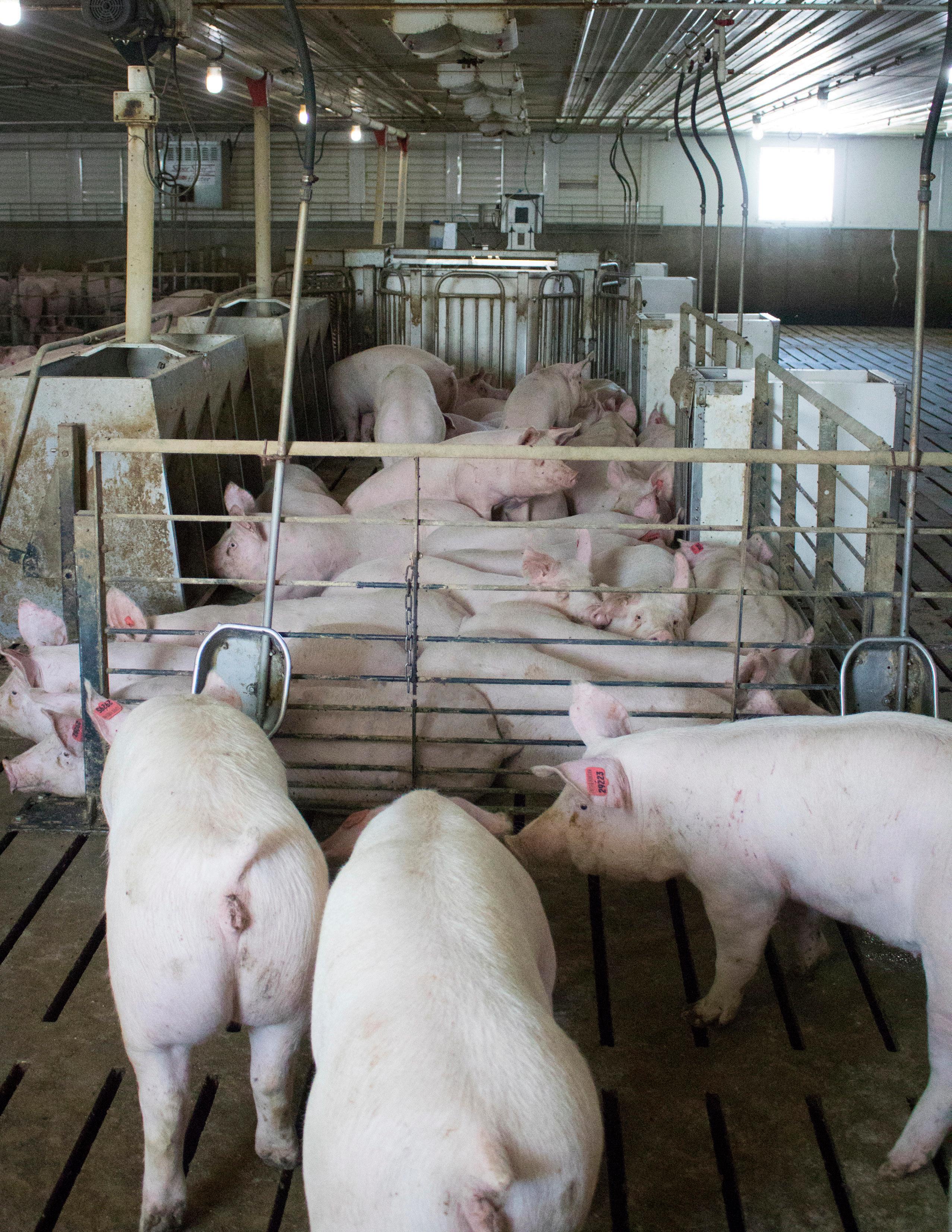
your next gilt trainer could be who you least expect
Training
gilts for ESF pens shouldn’t even really be called training when you’re talking about using Nedap forward exit pens. After all, gilts’ natural curiosity allows them to train themselves. Working with pigs in a learning scenario is much harder on us, the trainers, than on them, and not because the work is hard, but because it is tedious and requires a lot of patience. It takes a special person with a unique personality type to do the job well. So when choosing your next gilt trainer, you may want to reconsider your hiring or selection process.
A calm gilt is a learning gilt
The number one goal in gilt training is to get the girls familiar and comfortable with the ESF equipment they will see in the group gestation pens. Unlike most aspects of hog production today, this process is not about speed and efficiency. If you rush a gilt and force her into the feed station, she is going to get worked up and start panicking. When she starts panicking, she won’t be willing to try new things and she’ll associate those negative feelings with the feed station.
Pigs are curious animals and if you let them, they will train themselves with little guidance. When they are calm, they will explore the feed station themselves and learn the ins and outs of the entire system. They won’t be overwhelmed from being forced into something they don’t want to do, so they’ll have the mental capacity to learn new things.
The passive gilt trainer
Normally when you are choosing which staff should take on an important barn task, you are looking for the hardest workers that show up on time and are always ready to take on the next task. When choosing your gilt trainer, our experience shows you may need to reverse this thinking. Your gilt trainer should be passive and calm, and they may even work at a snail’s pace. Surprisingly, someone with this personality type will have the gilts trained quicker than the hardest worker in your barn, or maybe even the six hardest workers!
A person with a calm personality will be able to slowly guide the animals into the feed station without getting them riled up. This person naturally earns the trust of each animal because he or she is patient and doesn’t take any threatening or forceful actions. Trainers do occasionally have to guide some of the animals into the feeder, but
with a calm personality showing them the way they go willingly. Some producers even refer to their trainer as their “pig whisperer” because they seem to find a way to get the girls to do things nobody else can.
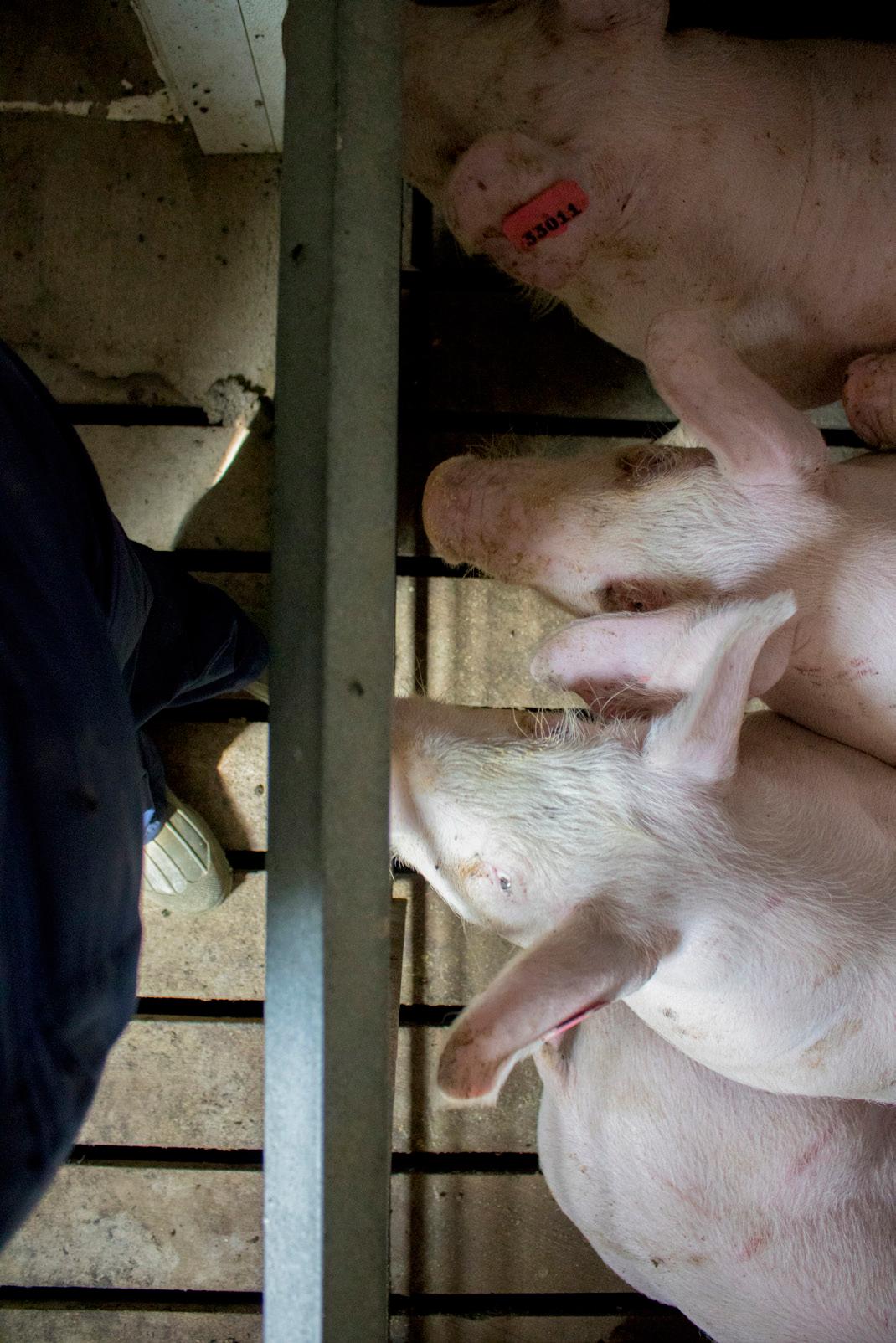
Finding the right person for the job
It may be out of your comfort zone to hire someone who is going to occasionally show up late and who might not be able to easily kick it into high gear, but that is okay for this position. In fact, you may already have a qualified candidate currently on your team.

Look for the staff person who seems to have a deeper connection with the animals. This person may even get a little distracted from their work and spend “too much” time petting or talking to the animals; the most effective gilt trainers should, in a way, view the animals as his or her pets.
Remember, don’t put someone in this position who wants to get all 300 gilts familiar with the system in four hours. Hire the tortoise, not the hare.
23
Topigs no
We recently had the exciting opportunity to work with Topigs Norsvin as they opened their groundbreaking Delta Canada boar testing barn in Woodlands, Manitoba. This project marks an exciting time in boar research, where intricate data analysis and responsive genetic selection can improve stock in less time. Below we share a time-lapse of the project and an explanation of the overall impact on the pork genetics landscape.
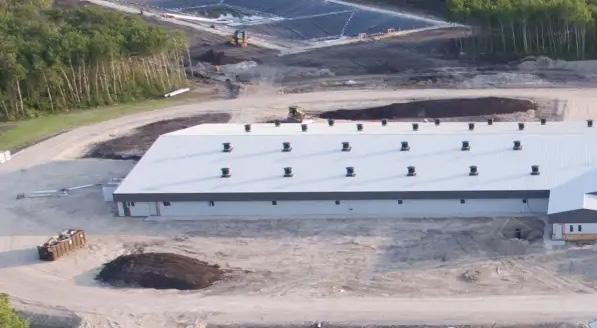
New Standard’s Involvement in the Project
Our role was to supply the Nedap PPT (Pig Performance Tester) units for this project. We supplied 96 PPT units that were installed in 12 rooms. There will be 12 boars on each unit for 12 weeks at a time.

The PPT records highly accurate individual feed intake information so that researchers are able to monitor the moment by moment intake and growth of boars on an individual basis.
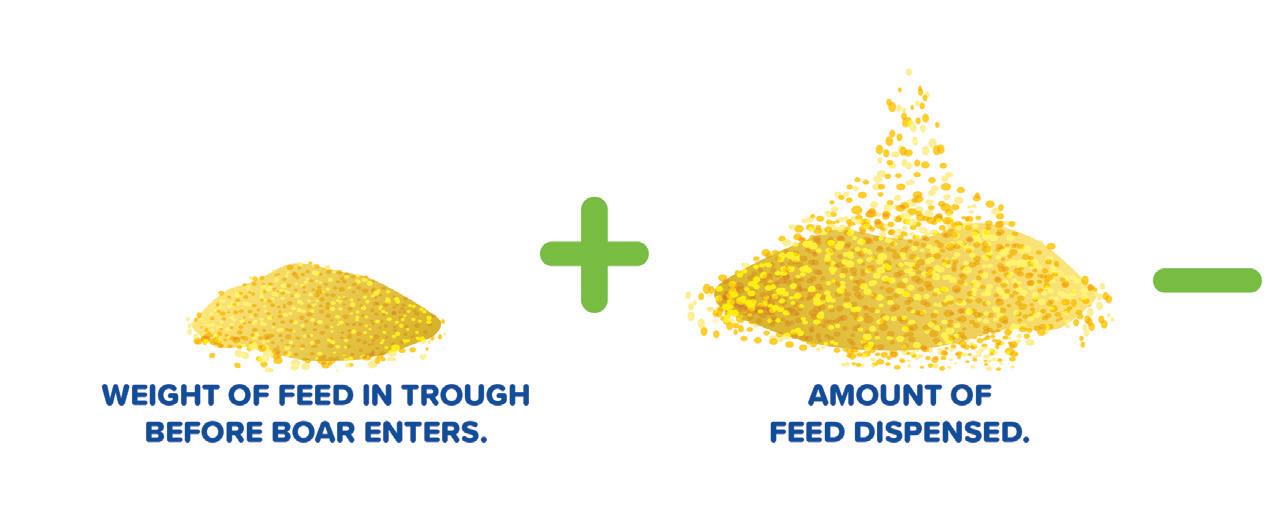
How PPT Works
The PPT unit is an individual, free-access feeding station that identifies each boar by RFID, weighs him upon entry, and provides him with as much food as he wants to eat. When he leaves, the amount of feed he consumed is registered (weight before he entered + amount dispensed – amount left = consumption).
Using that data, Topigs Norsvin plans on selecting the top 50 boars from a total of 53,000 boars. These top 50 will be selected based on the data from the PPTs which will tell them which boars had the best feed efficiency from the time they are 30 kg to 130 kg, or about 12 weeks.
Those top boars that make the cut based on the data from our PPTs will then be sent for a CT scan so researchers can analyze them internally as well. This will give them a better picture of their musculature and structure. Based on the CT scan results they will select out the boars that have the best combination of feed and growth efficiency and the best body composition. These boars will be used as stud boars to improve the genetic stock.
How This Setup Will Improve Topigs Norsvin’s Genetics
In the past, when genetics companies selected boars,
24
internally, then they selected his brothers as studs, hoping and assuming that they were built the same. This new setup at Delta Canada is an exciting and monumental step forward for Topigs Norsvin as it brings even more robust data and accuracy to their genetics research, and we were proud to partner with them for this project.


there was more educated guesswork involved. While they could judge feed intake to some degree, there wasn’t the level of accuracy that they can achieve with the Nedap PPT units. Using the PPT data and observational data, they can generate reports that give insight into more than just feed intake. If they observe aggressive behavior traits in certain boars, they can check for correlations with feed intake, feeder dominance, etc. and begin to select out the less aggressive males if they desire.


Boars that were selected under the old system would have to be euthanized to view their musculature and structure. If the boar looked good

25
In the past, when genetics companies selected boars, there was more educated guesswork involved.
rsvin
While they could judge feed intake to some degree, there wasn’t the level of accuracy that they can achieve with the Nedap PPT units
The Secret to ESF Success
GILT SELF-CONDITIONING
Self-conditioning gilts by gradually exposing them to elements of ESF from a very early stage puts less pressure on the pigs and staff, and allows the animals to learn the system naturally and calmly. But self-conditioning animals and giving them time to adjust isn’t just the secret to ESF success, it is the foundation of good animal husbandry. Learn more about how we accomplish it.
A Real Life Example
For those of you with toddlers, the task of potty training is often dreaded. Some child behavior experts say you should make the process quick and get them through it in a few days. Trial by fire, if you will. You may have accidents, crying, and stress, but it will be over quickly. Other experts take the child-led model where you expose them to the elements of potty training before
they are actually ready to train. You might get out the potty chair when they are only 18 months old, set it in the bathroom, and let them try sitting on it with no pressure to actually perform. Children in this scenario generally train very quickly, and often almost on their own, once the concept clicks in their brain.
Gilt pre-training works like the second option. Gilts are allowed to spend time around the various ESF elements while in the GDU and in pre-training, and as a result they get used to the system before being asked to use it their actual feeding needs.
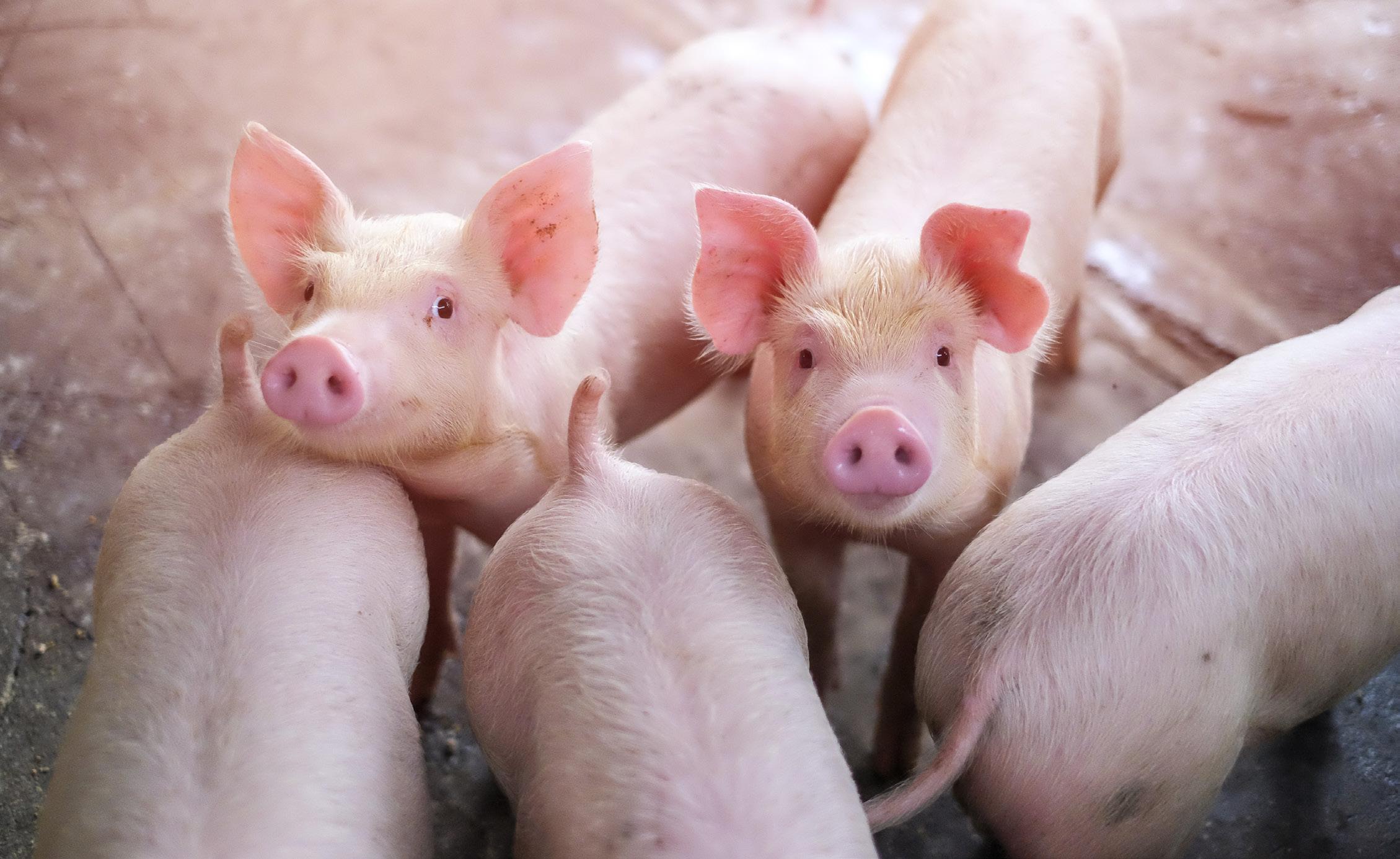
Gilt Development Units, Conditioning, and Pre-Training
Some barn managers resist the idea of pre-training ini-
26
WE HAVE TO SAY IT... WE DON’T LOVE THE PHRASE GILT TRAINING—IF ONLY BECAUSE IT IS SO MISUNDERSTOOD WITHIN THE ESF WORLD.
WHEN WE TALK ABOUT GILT “TRAINING,” WE ARE REFERRING TO CHANNELING THE GILT’S INNATE CURIOSITY INTO LEARNING A TASK.
tially, thinking that a dedicated area sacrifices too much barn space and adds an unnecessary step to the training process. Space is certainly a consideration, but if you adjust the flow of your barn, moving gilts into the GDU at a younger age, you’ll find that the space allocation was worth the sacrifice in the end.
We recommend starting gilts in their GDUs as young as you can—even as young as 50 pounds. Generally when we design and consult on GDUs, we like to bring the gilts in somewhere between eight to ten weeks and start doing self-conditioning immediately with an auto-sort mechanism such as a scale. This article illustrates the way we have used scales to precondition pigs to roller-gates.
Then, four weeks prior to their ESF training, or at the age of about 150 days, we recommend beginning pre-training.
How to Set Up Pre-Training
We’ve all heard the phrase “practice makes perfect,” but when it comes to pre-training it is especially true. When gilts are exposed to the elements of ESF early in life, they essentially train themselves. We’ve also seen that some pigs who are pre-trained need little to no actual training, because they are able to easily step from pre-training in a GDU to ESF training to the actual ESF pens.
Setting Up Roller Gates
There are several schools of thought on how to set up pre-training, but we recommend using Nedap roller gates with food on one side and water on the other. This allows the pigs’ natural curiosity to lead them through the gates. But keep in mind, this isn’t the first time that these gilts have seen roller gates. Ideally they are also being exposed to roller gates during their time in the GDU.
When to Move to ESF Training
As the gilts reach sexual maturity and enter their first estrus in the pre-training pen, or at about 150 days of age, they move to the actual ESF training pens. In many cases pre-training has shortened the time that pigs need to spend in ESF training, allowing for animals to move into the sow barns more quickly and with much less stress to the animal.
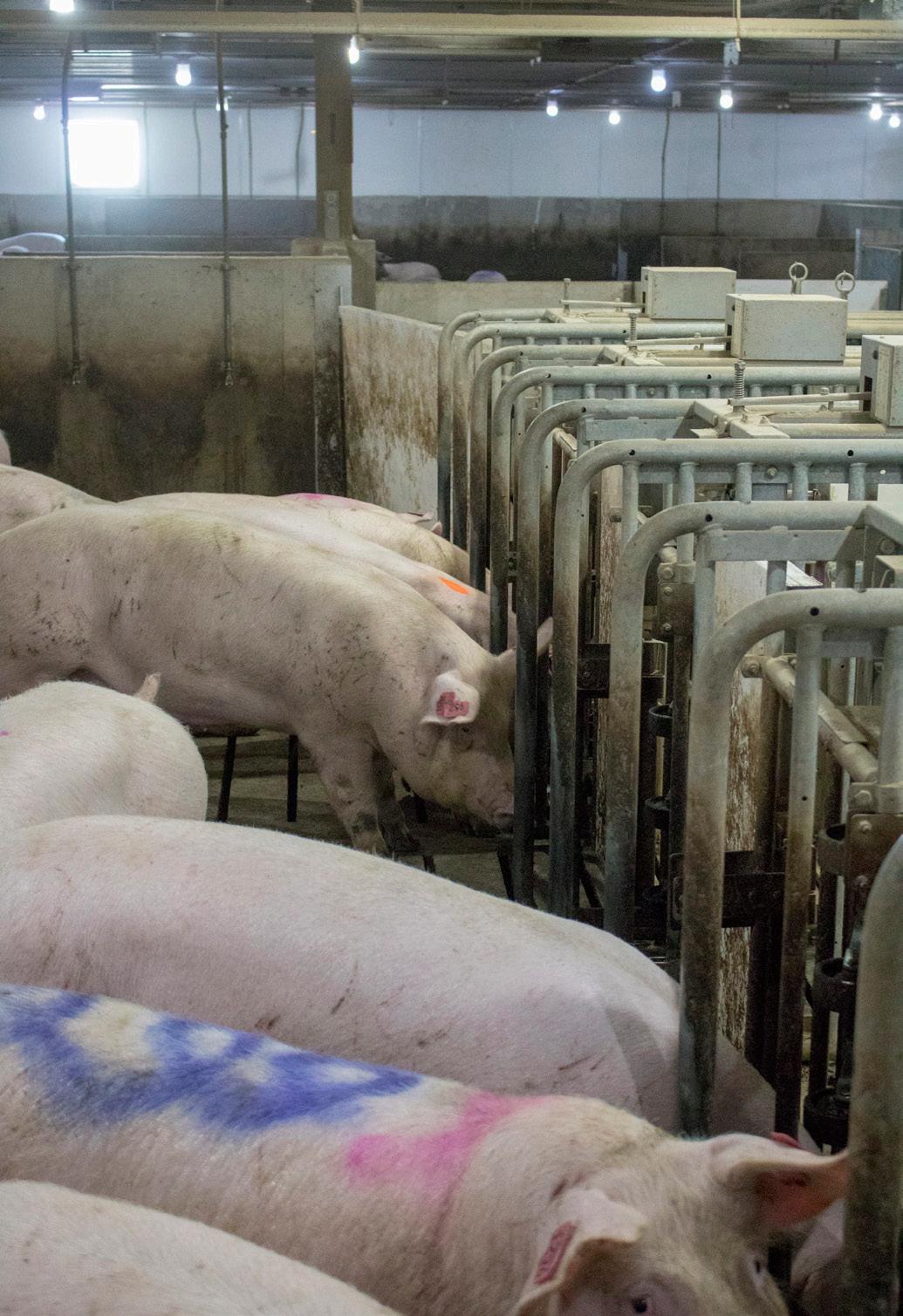
Staffing Factors to Consider During ESF Training

We all know that pigs are naturally curious animals, but sometimes it’s easy to forget just how smart they are. We have found that if you keep your gilts calm, they will be motivated to figure out the ESF system with very little human intervention.
The most important factor in keeping pigs calm during ESF training, besides having previously exposed them to elements of ESF while they are still in the GDU, is to find a gilt trainer who is naturally calm and patient with the pigs. If you have someone who is trying to rush the process, it will do more harm than good.
27
WE’VE ALL HEARD THE PHRASE “PRACTICE MAKES PERFECT,” BUT WHEN IT COMES TO PRE-TRAINING IT IS ESPECIALLY TRUE.
Converting a Stall Barn to Group Sow Housing Barn
PEMBINA COLONY
Weoften get asked to talk through the process of taking a stall barn and converting it to a loose housing barn, and for good reason! The process seems daunting, but in reality it is pretty painless if you plan ahead. Every barn conversion is different due to a number of factors including barn size, current and desired barn operations, temporary housing options, and a number of other factors. Providing a general outline of the conversion process is helpful, but we decided we could paint a clearer picture if we walked you through a recent conversion.
In Mid-August of 2017 Pembina Colony contacted us asking what it would take to convert their sow barn to group housing. As with all conversion projects, we informed them that we would first have to visit the barn to see what they currently had, and then we could develop a plan from there.
Initial Meeting
At our first meeting in the barn we discussed all available options, and we clearly explained all that would be involved in the conversion. As is quite common in these discussions, their largest concern was that they wanted to stay in production while making the conversion; so one of our first tasks was to find
somewhere to keep the sows while we completed work in the gestation barn. We were fortunate in this particular instance to have some available finishing space that could be temporarily used for that purpose.
Proposal & Quote
One month later, we finalized the plan and provided Pembina with the quote and floor plan for what would be required. After a few more meetings to confirm the details, they decided to go ahead with the conversion project.
Phase One: Training the Girls
In January of 2018, two self-training gates were installed using a couple of the finisher pens. We laid it out so that they were able to put a breed week into each pen; by installing two gate sets they were able to have two breed weeks training at the same time and speed up the process.
As with training new gilts, training their existing herd was not a lot of work, it just took time for the animals to teach themselves and get comfortable with the equipment.
Phase Two: Introducing ESF
Any concerns they had with training were washed away two weeks later when they introduced the first group to an ESF. Without having to push any animals through the system, the
28
entire group had eaten their portion by noon on the second day. That group even included a sow that was at parity 13! (That is not a typo.)
Since this was pretty hard to believe I asked to see the proof, and her sow card from their sow management software ran several lines past the allotted space.

I just had to go into the barn myself and get a video of her entering the feed station, she was so big she had to bend her back down to fit in but she didn’t hesitate at all. So don’t tell me you can’t teach an old dog (or pig) new tricks, just follow the process and let their intelligence and curiosity do the rest.
Once the barn staff got into a rhythm and they realized that not one animal was missing her feed, they knew they had everything under control with the ESF stations. At that point we turned our attention to the task of physically converting the sow spaces to gestation pens.
Phase Three: Removing the Stalls
As the team emptied each area of the barn and moved the sows to the temporary training/ holding area, the stalls were cut off and removed until the entire room was empty.
They then removed the slats as they were worn out and would not have been functional going forward. This process took a little over two months, and by mid-April they were ready to start reconstruction.
Phase Four: Reworking the Space & I nstalling Penning & Gating

The first step in this phase was to excavate a couple of areas at the ends of the pens to allow fully slatted walking areas within the pens (the majority of the pits were able to be used as they were).
They then laid in the new slats which allowed them to start pouring a skin of concrete over the walkways to level off the laying nests.
Penning, feed stations, and new breeding stalls were then installed, and after a bit of electrical and plumbing the system was ready for the animals to re-enter.
Phase Five: Moving In & Maintaining the Barn
From the time when the barn was completely empty to when it was ready for sows to re-enter it was about 10 weeks, which was not bad at all considering the barn staff did the majority of the work after completing their regular duties in the still functioning barn. Because they took the time to allow all of the animals to train themselves while they converted the barn, the introduction of the sows to groups was a smooth process, and production continued ticking along.
These projects are always enjoyable, and it was a pleasure working with such an inspired group of farmers. Providing them support and being able to guide them successfully through the process is always incredibly rewarding. Thank you to Pembina Colony for having the faith in New Standard to partner with us on this conversion and the modernization of their sow barn.
29
We often get asked to talk through the process of taking a stall barn and converting it to a loose housing barn
View Photos from the Project
THE PROCESS SEEMS DAUNTING, BUT IN REALITY IT IS PRETTY PAINLESS IF YOU PLAN AHEAD.
Converting a Stall Barn to Group Housing at Pembina Colony
A LOOK INSIDE
In January of 2018, two self-training gates were installed using a couple of the finisher pens.

They then removed the slats as they were worn out and would not have been functional going forward. This process took a little over two months, and by mid-April they were ready to start reconstruction.
As the team emptied each area of the barn and moved the sows to the temporary training/holding area, the stalls were cut off and removed until the entire room was empty.
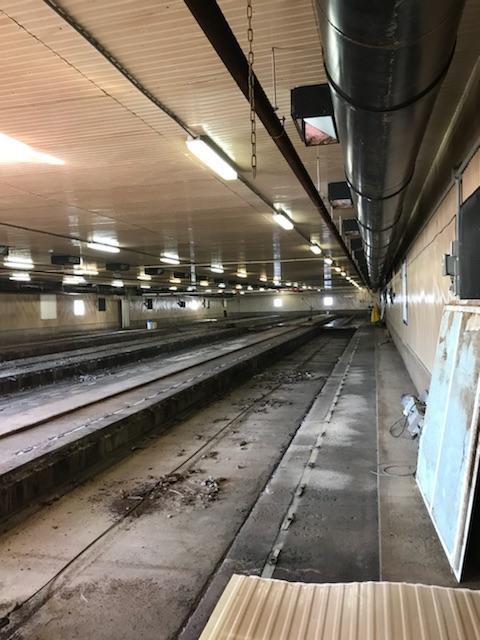

30
2 3
1
The first step in this phase was to excavate a couple of areas at the ends of the pens to allow fully slatted walking areas within the pens (the majority of the pits were able to be used as they were).

They then laid in the new slats which allowed them to start pouring a skin of concrete over the walkways to level off the laying nests.
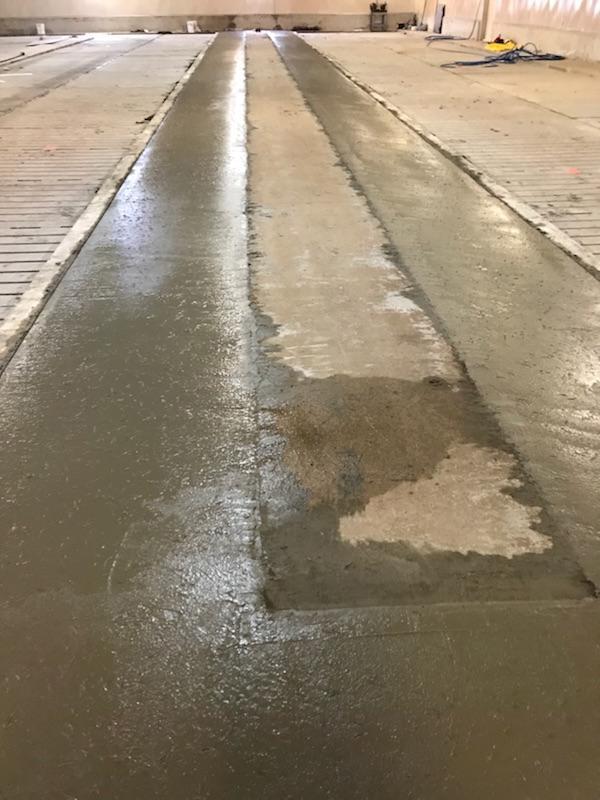
Penning, feed stations, and new breeding stalls were then installed, and after a bit of electrical and plumbing the system was ready for the animals to re-enter.

31
4 5 6
New Perspective on Handling Sow Feedback
Vaccines might be a hot topic in society today, but one thing that isn’t debatable is that if you put weakened viruses into a body, that body’s immune system learns about the pathogen and creates antibodies to fight back. Much in the same way, giving sows refined biological feedback helps her develop antibodies that she can then pass on to her piglets, giving them a better chance at fighting off those same diseases.
There are various schools of thought on how feedback should be managed. We recently gained new perspective in this area and wanted to pass on our discoveries.
Handling Sow Feedback When Germs Are Inevitable
The headline says it all, Germs are inevitable; but it is still important to create a plan for how to deal with them. Because pathogens are constantly evolving, it is
Giving sows feedback while they are gestating is smart, but it isn’t always pleasant.
So, What Are the Usual Sow Feedback Application Options?
Most feedback starts with intestines, manure (scat), and some kind of blender. It gets mixed up into a runny, liquid mixture; and from there farmers have a few options: Feedback “popsicles,” which are frozen blocks of the mixture given to sows to lick as they melt. This is a popular option for large pen ESF, but it is hard to ensure that all sows are partaking.
You can also pour the feedback on top of regular feed. Most sows don’t seem to mind this, but this option is not feasible with electronic feeders.


Another option is to put the mixture into a sprayer which is then used to spray the snouts of sows that are due to farrow in a few weeks. Several producers we know use this method and then flag the sows that are due for treatment using paint.
Is There a Better Way to Apply Feedback?
years, manure has proven less reliable. Instead, piglet manure is being combined with the intestines of deceased and laid-on piglets; and the use of this blended
While all these options are able to be applied, there was a great discussion at the World Pork Expo, about feedback that led us to some interesting conclusions. Steve Horton with Thomas Livestock mentioned how one of his barn managers retrofitted a Nedap ESF automatic paint sprayer to hold feedback and then used the existing programming within Velos (Nedap’s companion ESF software) to flag sows when
32
they were ready for feedback and automatically spray them in the snout as they exited the feeders.
This method makes the system work smarter for producers, which is something we love. We were intrigued by the ingenuity and thought we could tweak his idea to make the process easier, and more accessible to other producers who are also using the Nedap system.
Product Development
After WPX, we started the process of creating a unit to work alongside the Nedap sprayer—something specifical-
ly designed to work with feedback, that can use some of the existing Nedap technology in a way that is easy-to-install and operate.


We’ve been through many test runs and now have working models in real field operation. Aptly named the Booster Shot 1000, our hope is that this new equipment will make the nasty job of working with feedback a bit easier, leading to happier and healthier sows and piglets.
If you’re interested in learning how you can improve your young piglet’s immunity and viability, please reach out to any one of our branches for more information. Mention you saw this in Modern Producer to receive 10% of on your order.


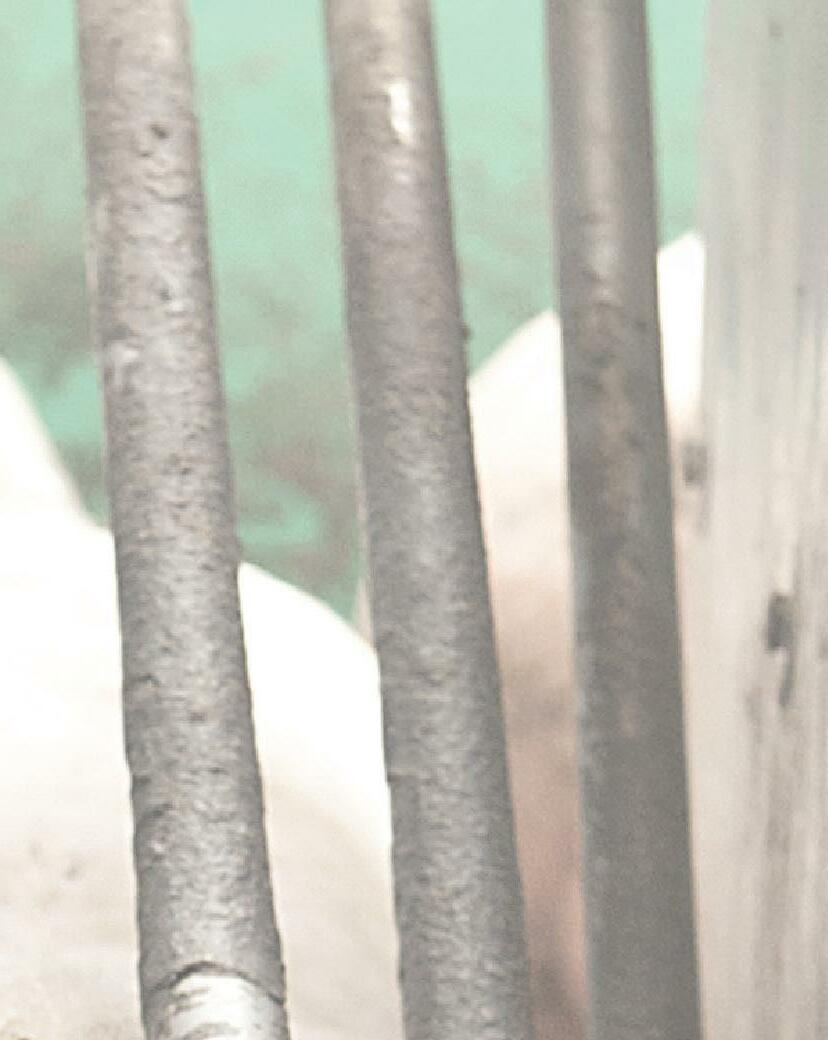
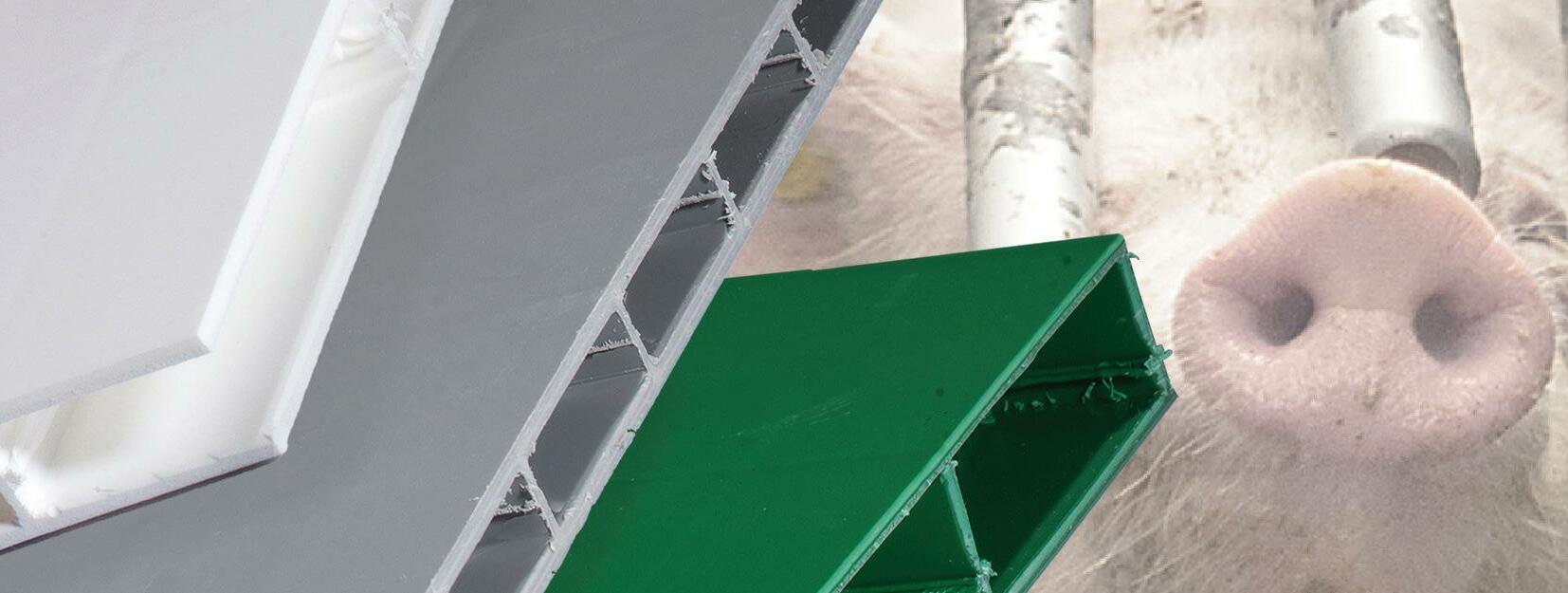






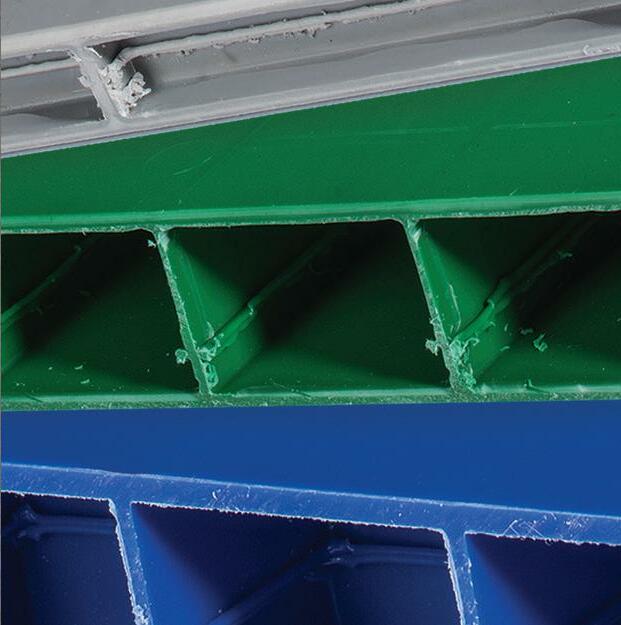




















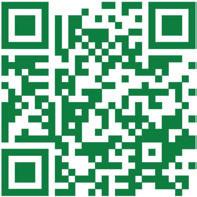
34
WWW.PANELTIM.COM
PANELTIM® Plastic solutions for pig husbandary Closed cells and dense molecular structure guarantee high biosecurity.
COOKING INSTRUCTIONS
Preheat your smoker to 300 degrees F.



Remove the membranes from the back side of the ribs by wiggling the tip of a butter knife under the membrane and then pulling back with a paper towel. Season on all sides with a pork BBQ dry rub.
Place ribs meat side up on the smoker and close the lid. Smoke ribs for 2 hours. Do not open lid for the entire 2 hours.
Prepare for the braising step by laying out two large sheets of heavy duty foil on a flat surface. Sprinkle 2 tablespoons of brown sugar down the center of each sheet of aluminum foil. Top the brown sugar with 2 tablespoons of butter, cut into small pads. Pour 1 Tablespoon of the Buffalo sauce on top of the butter and brown sugar (optional).


Remove the ribs from the smoker and place each rack meat side down on top of the brown sugar, butter, and buffalo sauce. Top the bone sides of each rack of ribs with the remaining brown sugar, butter, and buffalo sauce.


Fold up the ends and sides of the foil before pouring 1/2 cup of Dr. Pepper over each rack of ribs. Tightly crimp and seal the foil around the ribs. (be careful not to puncture foil)
Return the ribs to the smoker meat side down at 300 degrees F for 1 more hour. In a bowl, combine the BBQ sauce and the Dr. Pepper.
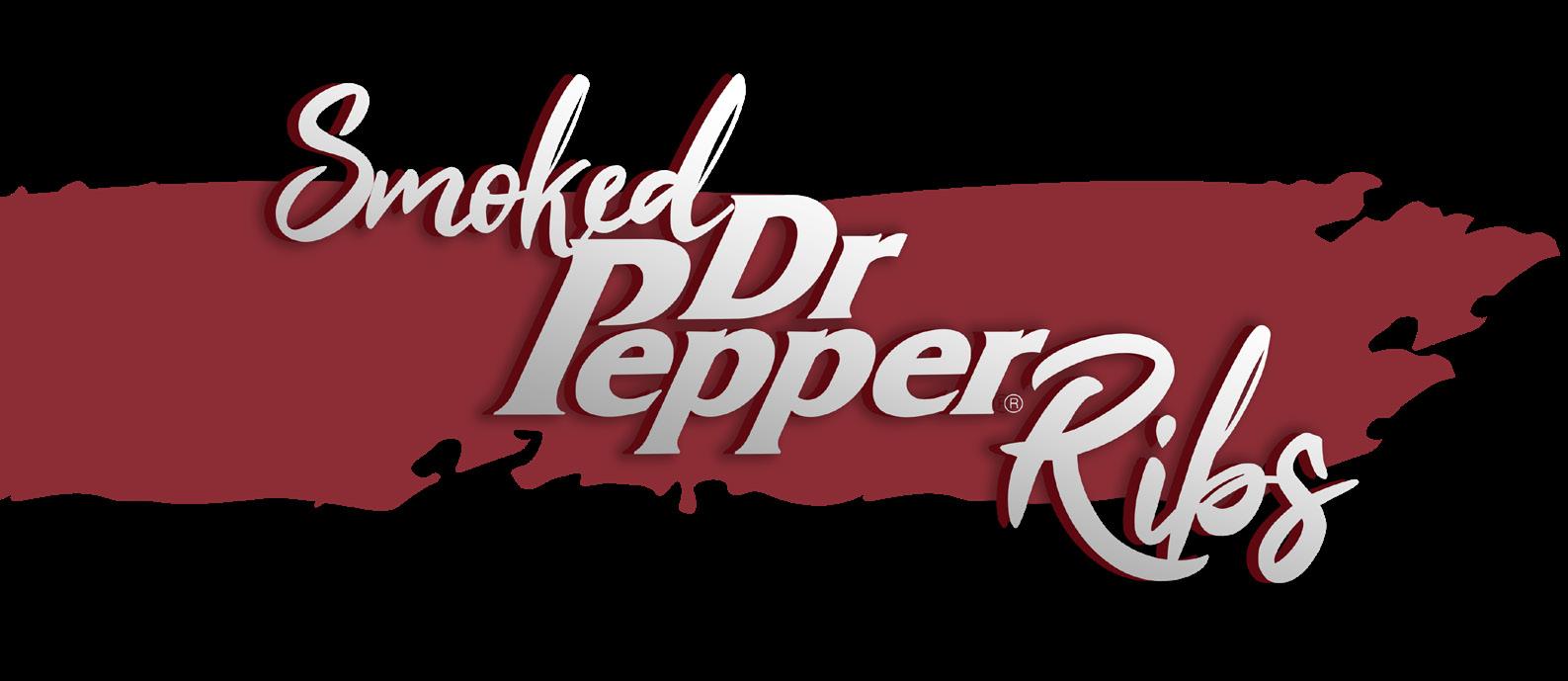
Carefully open tinfoil pouch and stick a toothpick through the meat, if there is little to no resistance they are finished. If there is resistance cover and put back on smoker for 15min.
If they are done remove from tinfoil and brush the sauce liberally all over the smoked ribs. Place meat side up on the smoker and close the lid and continue smoking at 300 degrees F for 10-15 min, or until the sauce has set and the meat has pulled back about 1/2 inch from the bones and the ribs are pliable and tender.
Carefully remove the ribs to a large cutting board. Let the ribs rest for 10 min. Slice and serve.
INGREDIENTS 3 racks baby back ribs 12 oz of Pork dry rub BRAISING LIQUID 8 Tablespoons salted butter 1/2 cup brown sugar 1/4 cup Buffalo sauce (optional) 1 cup Dr. Pepper FINISHING SAUCE 1 cup BBQ sauce 1/2 cup Dr. Pepper
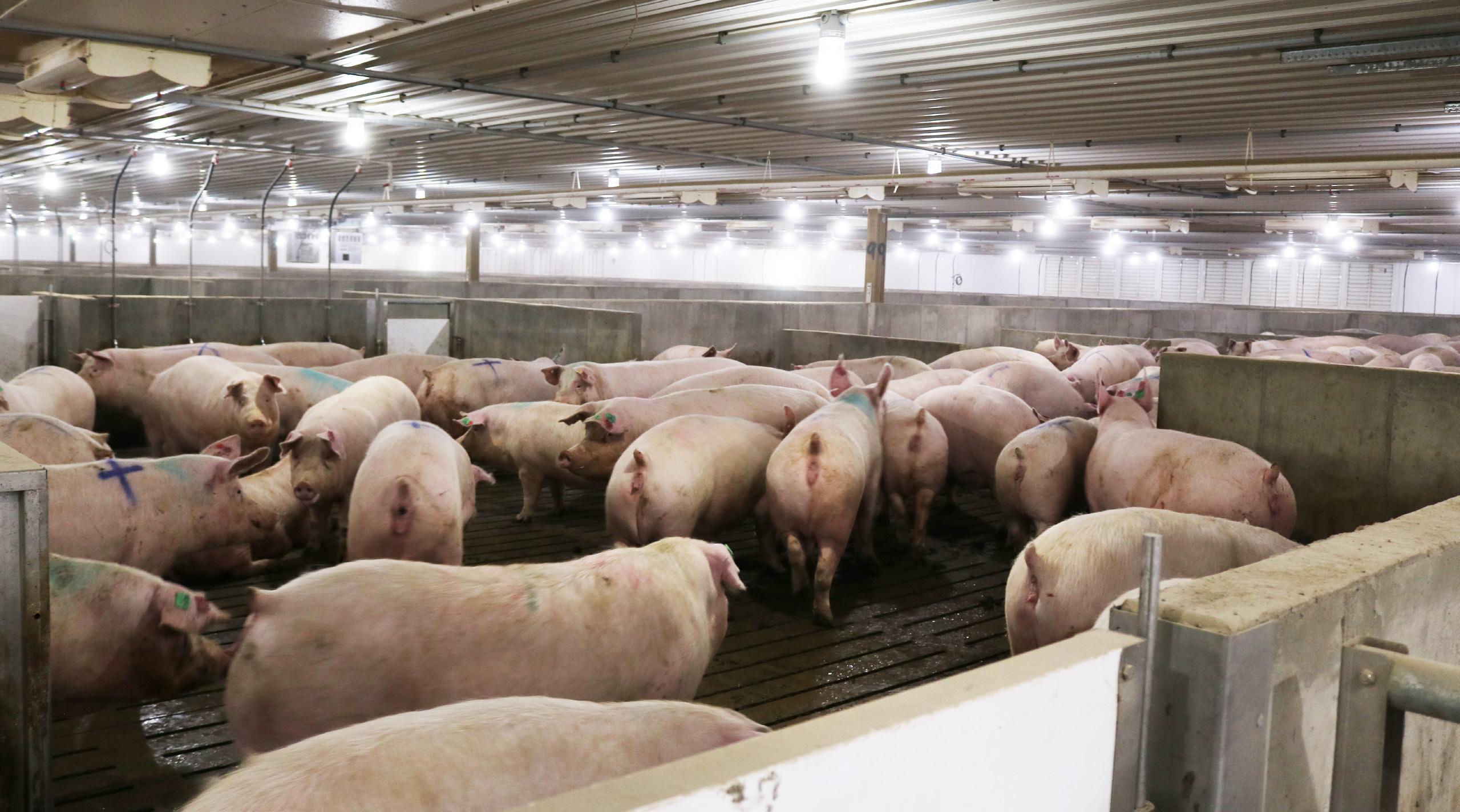
36 www.newstandard-group.com New Standard has three regional offices to bring their expertise in sow and poultry housing directly to you. New Standard US Contact Us Tim Kurbis: 605-496-9696 info@newstandardus.com New Standard US 1200 E Robur Dr. Sioux Falls, SD 57104 New Standard Ag Contact Us Kevin Kurbis: 204-485-4600 kevin@newstandardag.com New Standard Ag Inc 961 Harriot Rd St. Andrews, MB R1A 4H6 New Standard West Contact Us Kees (Kase) van Ittersum: 403-650-5051 kase@newstandardwest.com New Standard West Site 12, RR#6, Box 49 Calgary, AB T2M 4L5





















































































